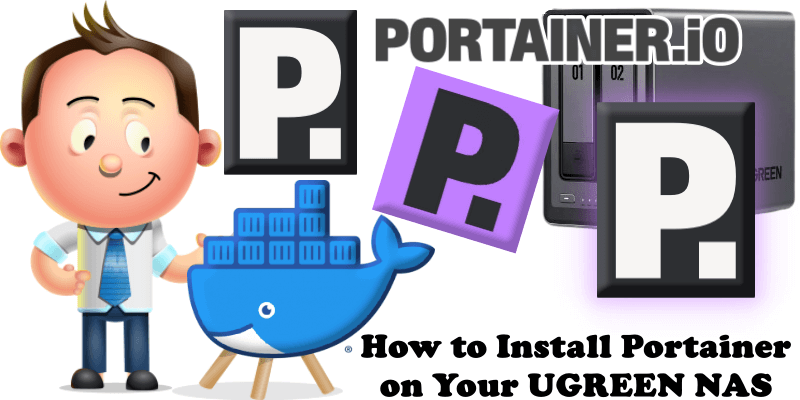
Today I will teach you how to install the latest Portainer 2.33.6 CE on your UGREEN NAS. Portainer is a lightweight management UI which allows you to easily manage your Docker host or Swarm cluster. Portainer is meant to be as simple to deploy as it is to use. It consists of a single container that can run on any Docker engine (Docker for Linux, Docker for UGREEN NAS and Docker for Windows are all supported). Portainer allows you to manage your Docker stacks, containers, images, volumes, networks and more! It is compatible with the standalone Docker engine and with Docker Swarm. The operating system for UGREEN NAS is called UGOS.
This guide works perfectly with the latest Portainer CE 2.33.6 release.
STEP 1
Please Support My Work by Making a Donation.
STEP 2
Open the UGREEN App Center, then click Settings. Follow the instructions in the image below.
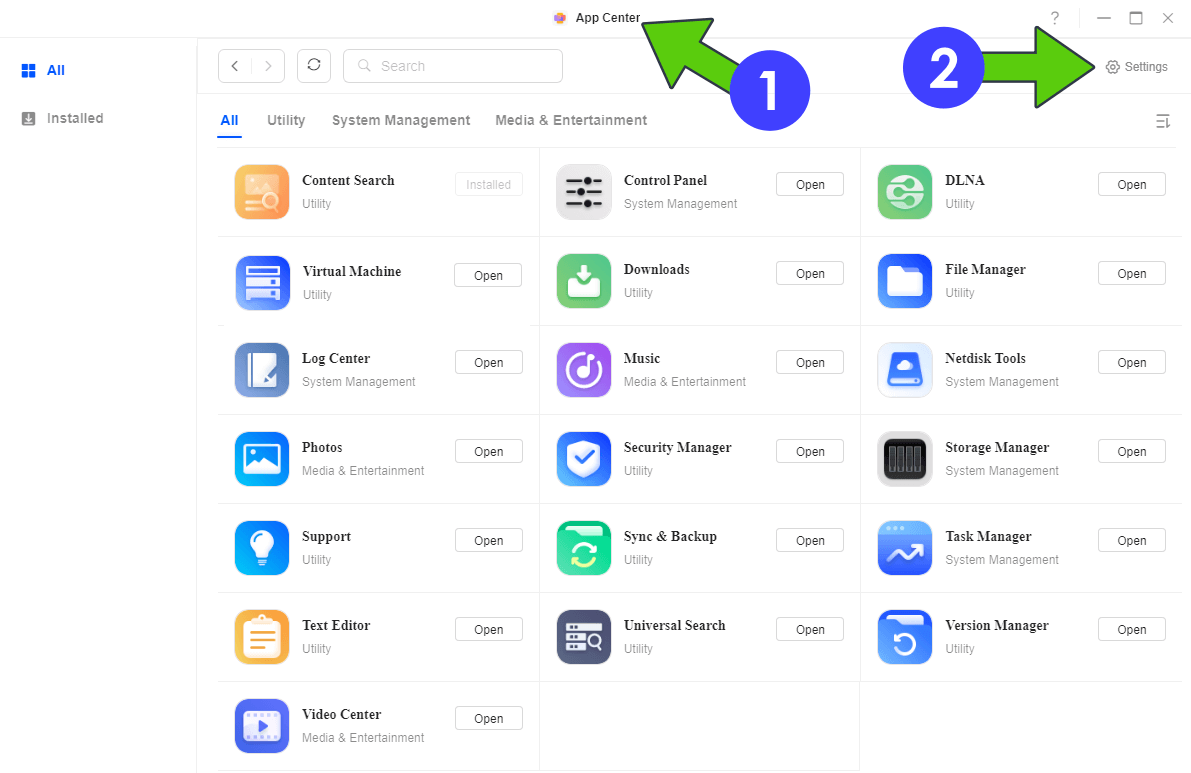
STEP 3
Select the Default Settings tab, then add Volume 1 as the Default Storage Location. Click Confirm. Follow the instructions in the image below.
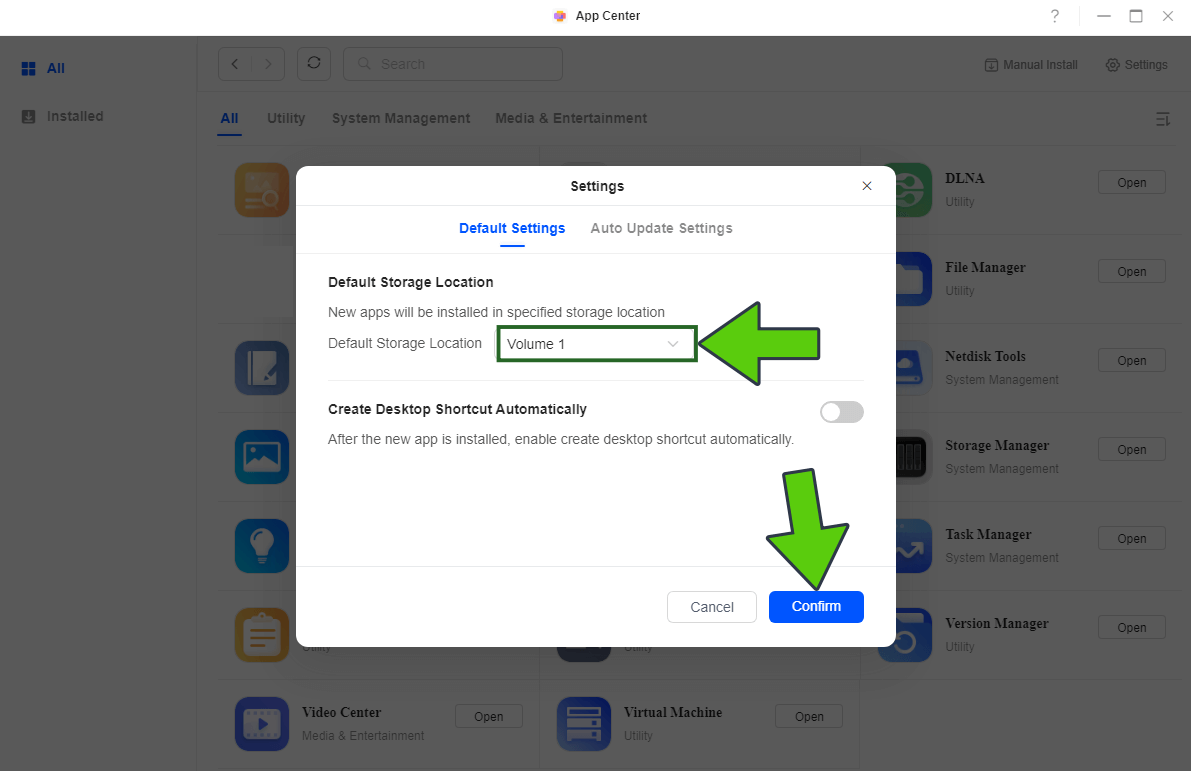
STEP 4
Install Docker via the UGREEN “App Center”. Search for Docker, then click Install App. Follow the instructions in the image below.
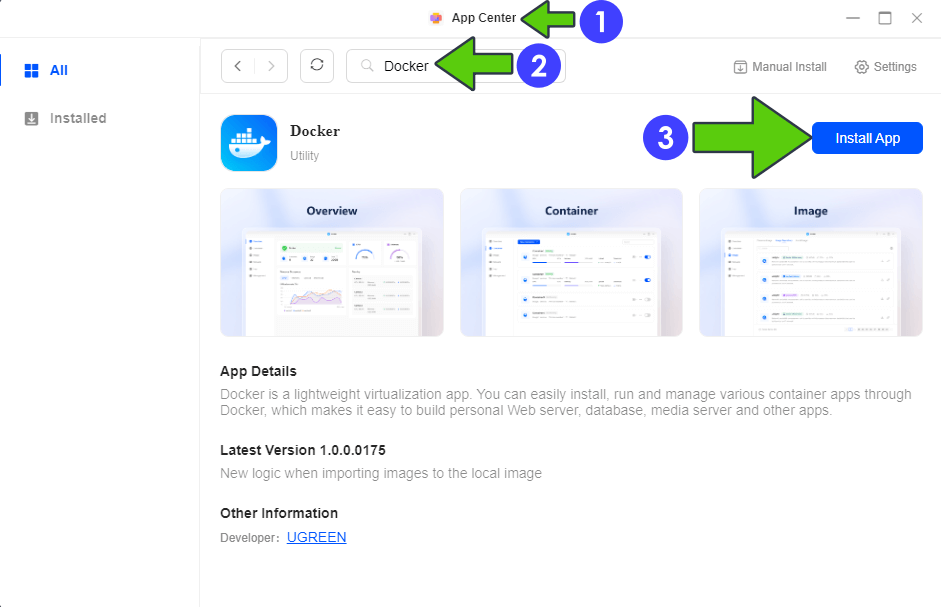
STEP 5
After you see Install Successful, click Done. Follow the instructions in the image below.
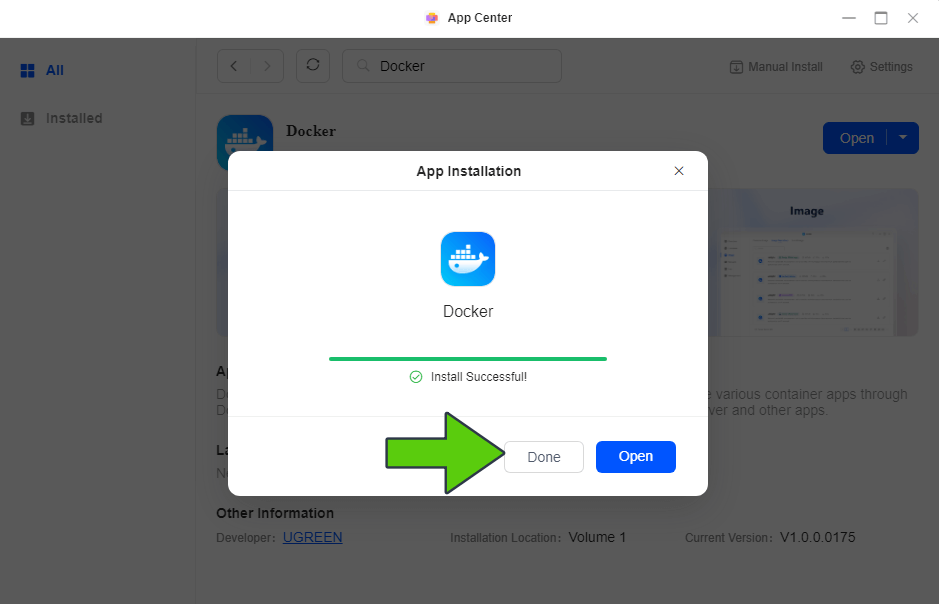
STEP 6
Add Read & Write Permissions to the Docker Folder. If you have already added the Read and Write Permissions to the Docker Folder, skip this STEP.
STEP 7
Go to File Manager and open the docker folder under Shared Folder. Inside the docker folder, create a new folder and name it portainer. Follow the instructions in the image below.
Note: Be careful to use only lowercase, not uppercase letters.
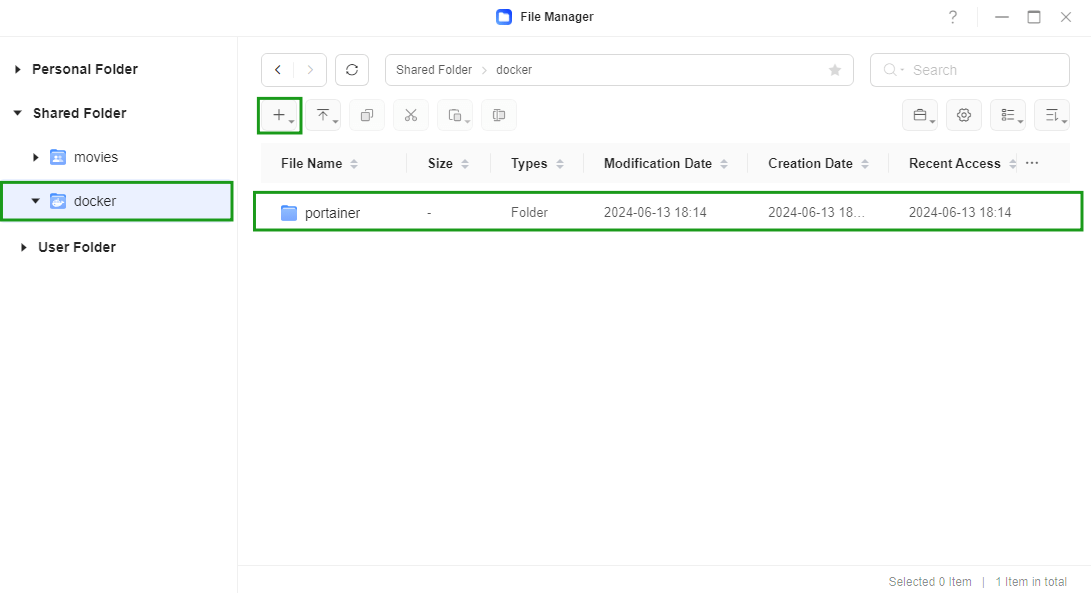
STEP 8
Go to Control Panel, then click on the Terminal icon. Follow the instructions in the image below.
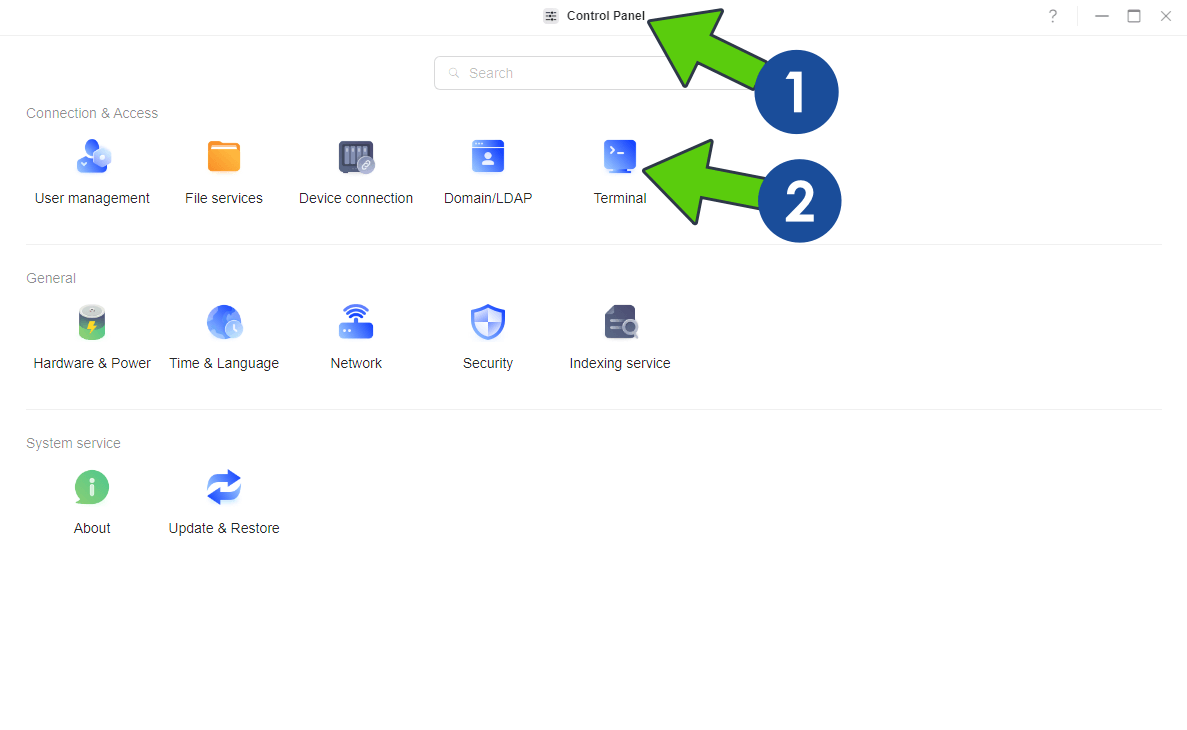
STEP 9
Check the Enable box to Enable the SSH service on port 22 . Select to Shut down the service automatically after 10 minutes. Click Apply. Follow the instructions in the image below.
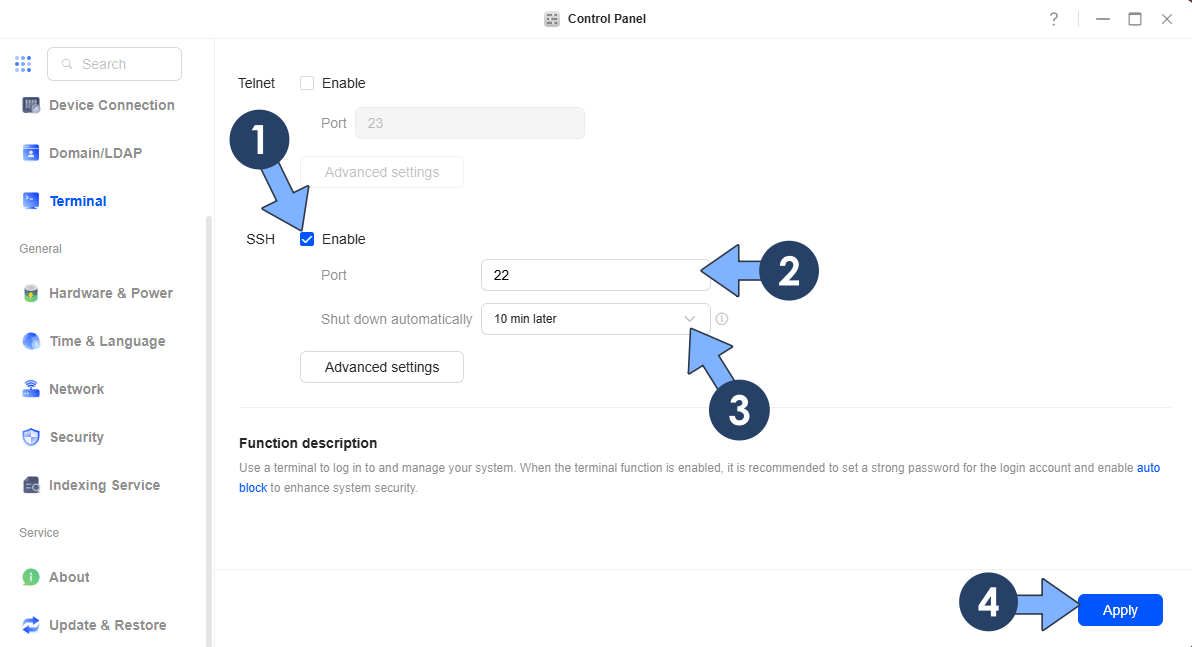
STEP 10
Now open the Windows Command Prompt Client. Search for command prompt on your Windows PC. Follow the instructions in the image below. You can also use the PuTTY Client or Mac Z Shell (Client) if you are a Mac user.
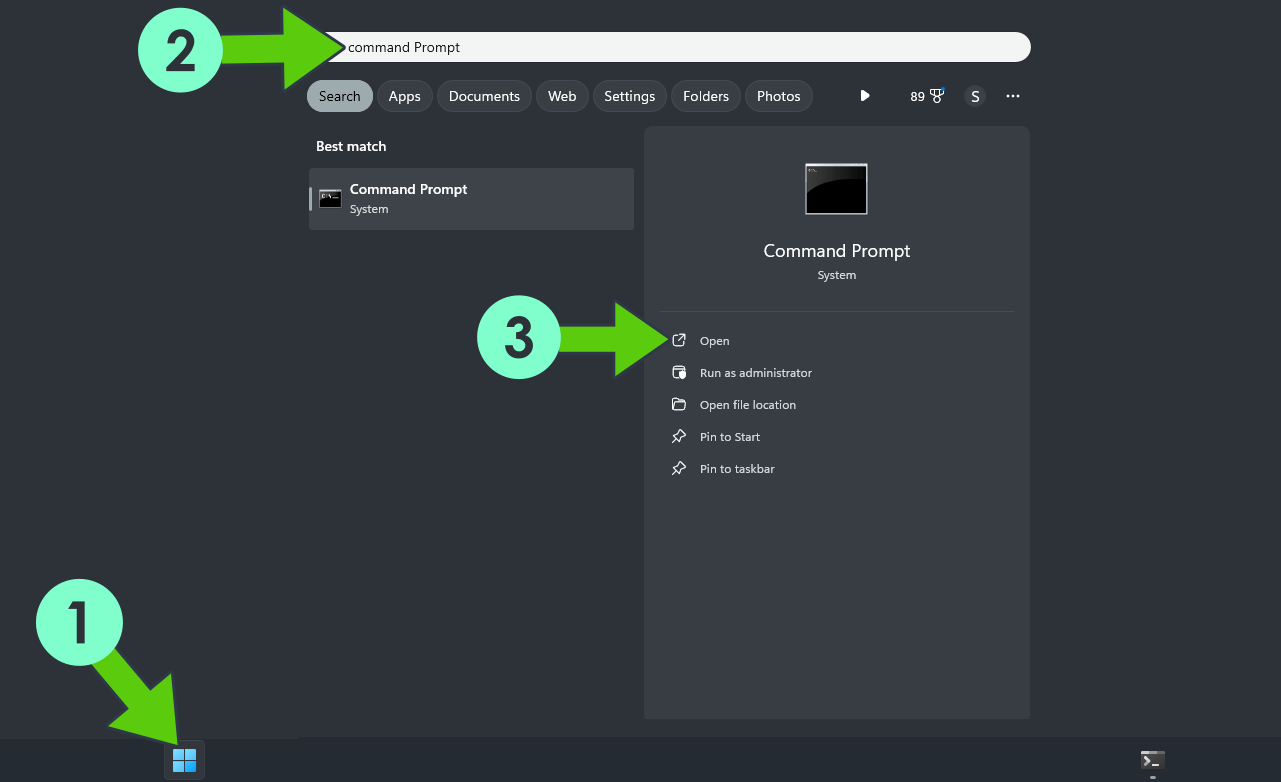
STEP 11
On Windows 10, open Command Prompt or use PuTTY or Mac Z Shell and type in ssh yourUGREENASusername@yourUGREENASip -p22 then press Enter on your keyboard. Follow the instructions in the image below.
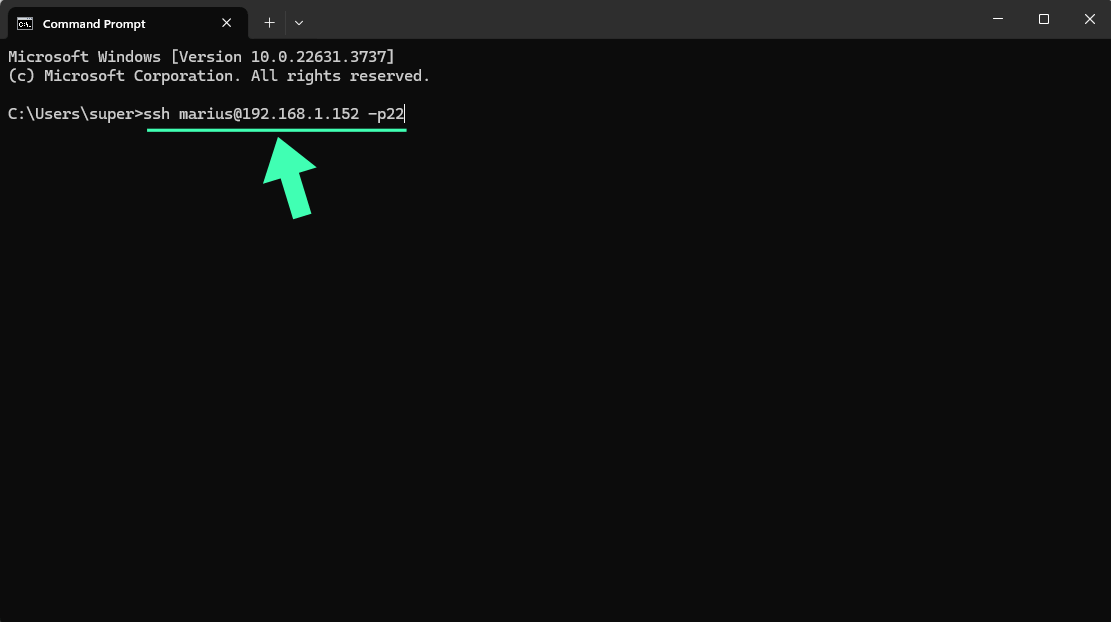
STEP 12
In Command Prompt, the message “Are you sure you want to continue connecting (yes/no)?” can sometimes appear. Type yes and then press Enter on your keyboard. Follow the instructions in the image below.
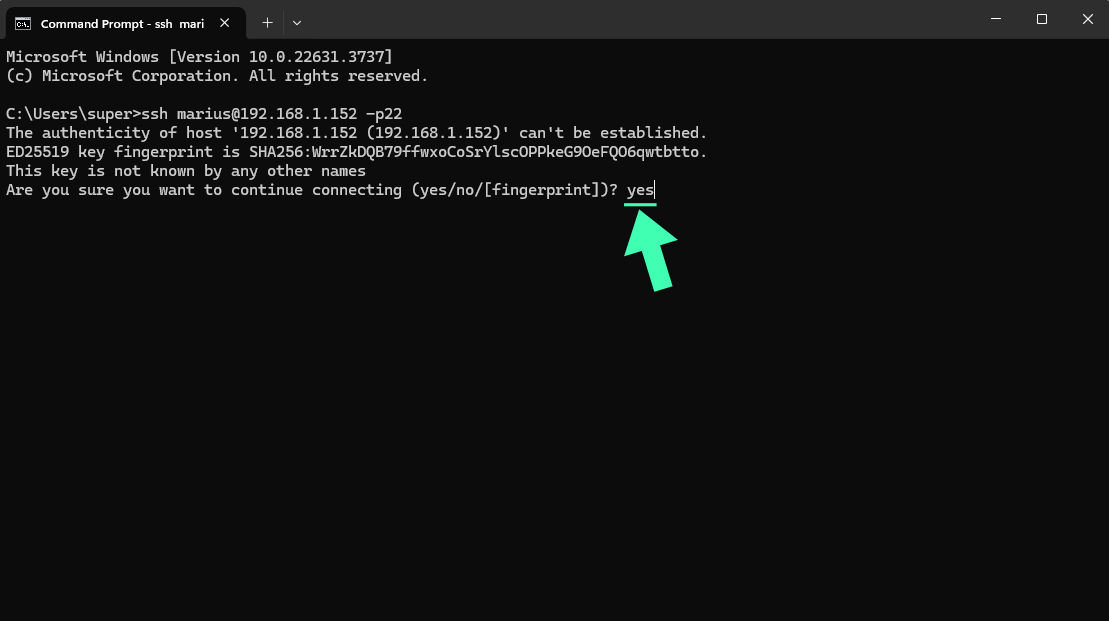
STEP 13
After you press Enter, you will be prompted to type in your UGREEN NAS password. Type it in, then press Enter on your keyboard. ⚠️Warning: When you enter the password, the command prompt will not show the written password. Just type in your password and hit enter. Follow the instructions in the image below.
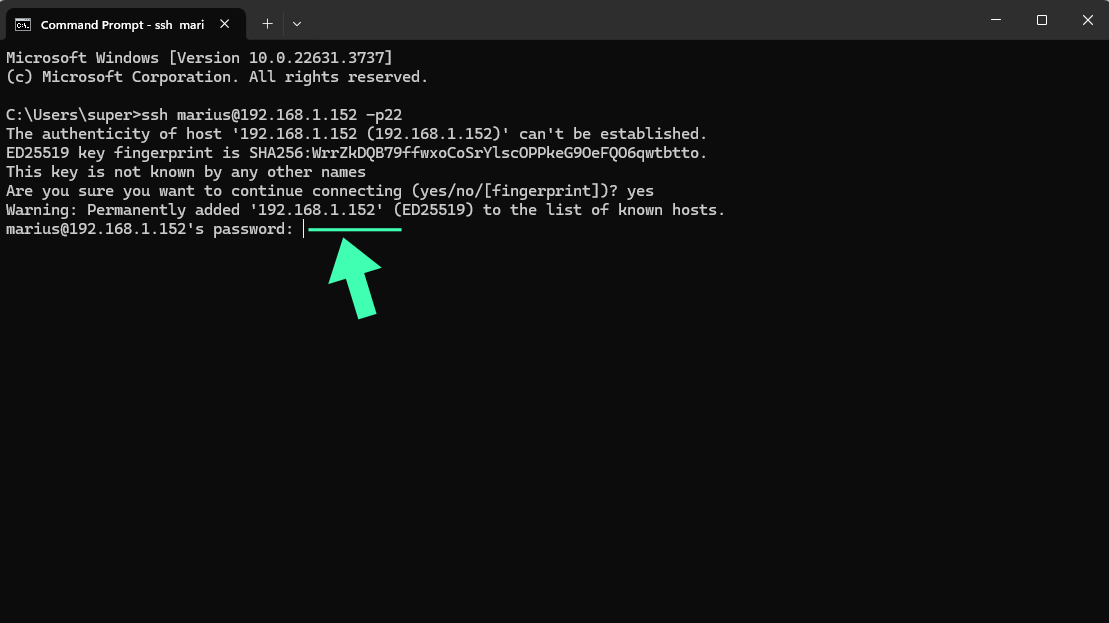
After you type in your password, your Command Prompt will look like this:
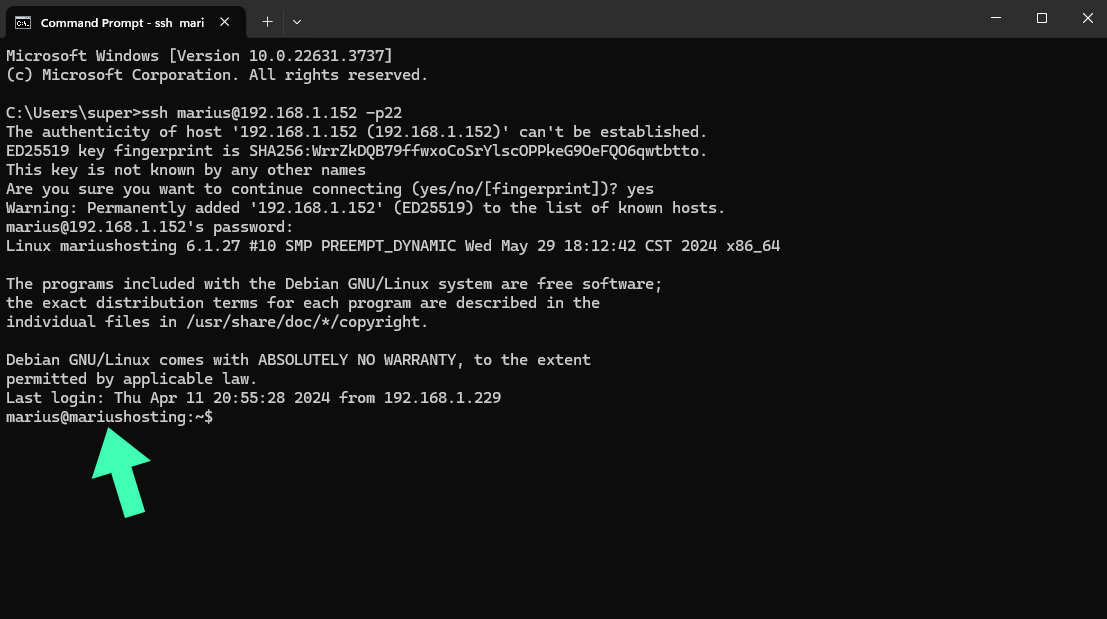
STEP 14
Now type in:
sudo su -
Then press Enter on your keyboard. Follow the instructions in the image below.
The su command switches to root user with high privileges.
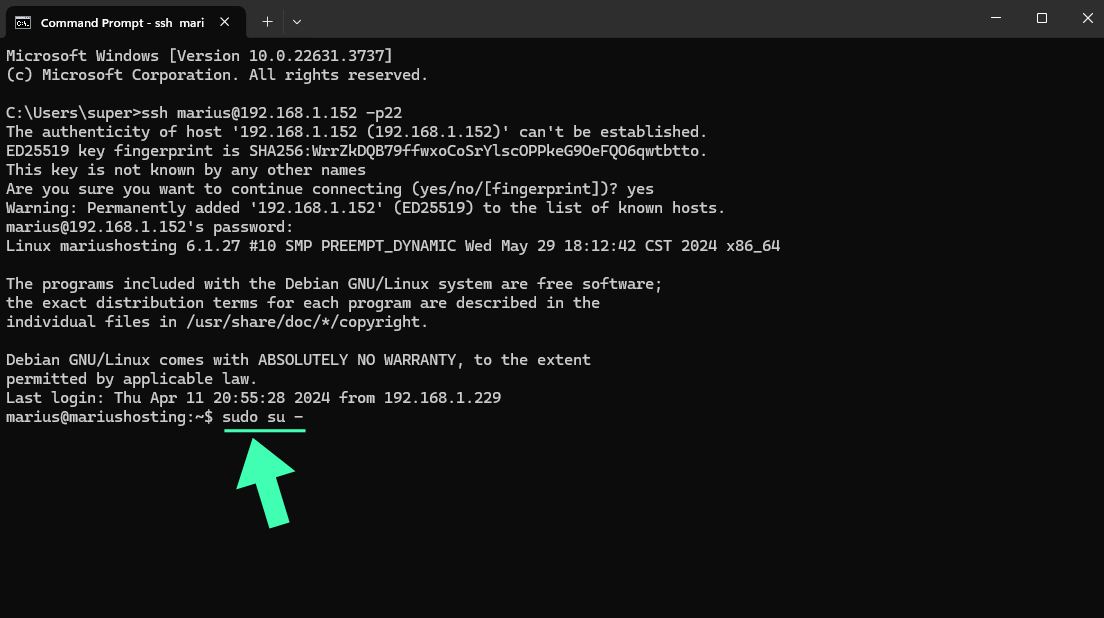
STEP 15
After you press Enter, you will be prompted to type in your UGREEN NAS password. Type in it, then press Enter on your keyboard. ⚠️Warning: When you enter the password, the command prompt will not show the written password. Just type in your password and hit enter. Now you have full root access to your NAS. Follow the instructions in the image below.
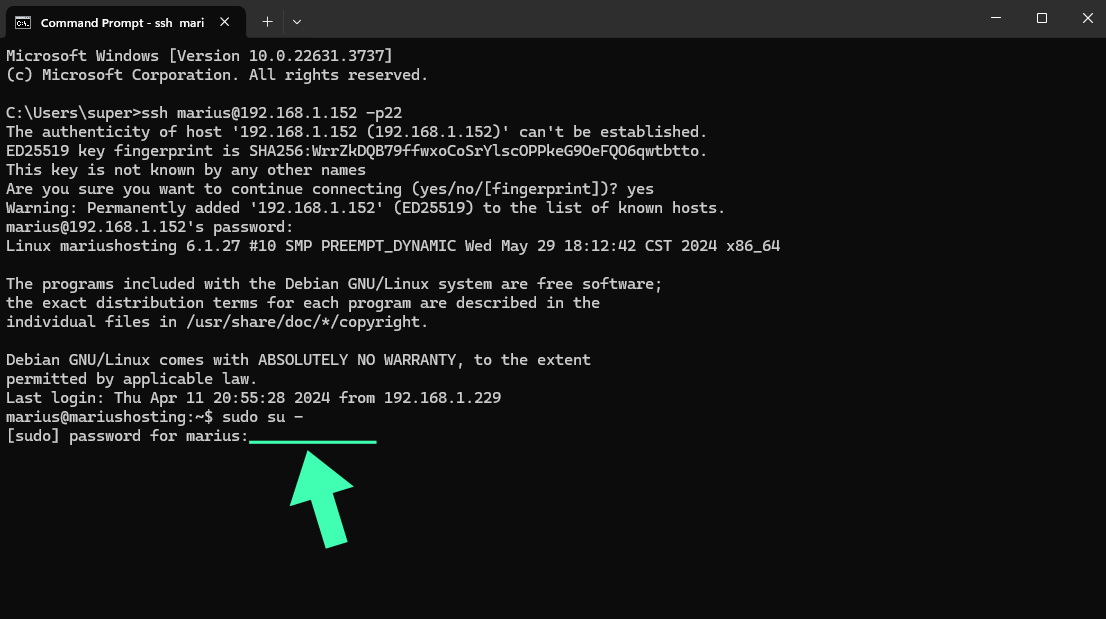
STEP 16
Copy/Paste the code below in your Command Prompt client, then press Enter.
docker run -d -p 8000:8000 -p 9000:9000 --name=portainer --restart=always -v /var/run/docker.sock:/var/run/docker.sock -v /volume1/docker/portainer:/data portainer/portainer-ce
Follow the instructions in the image below.
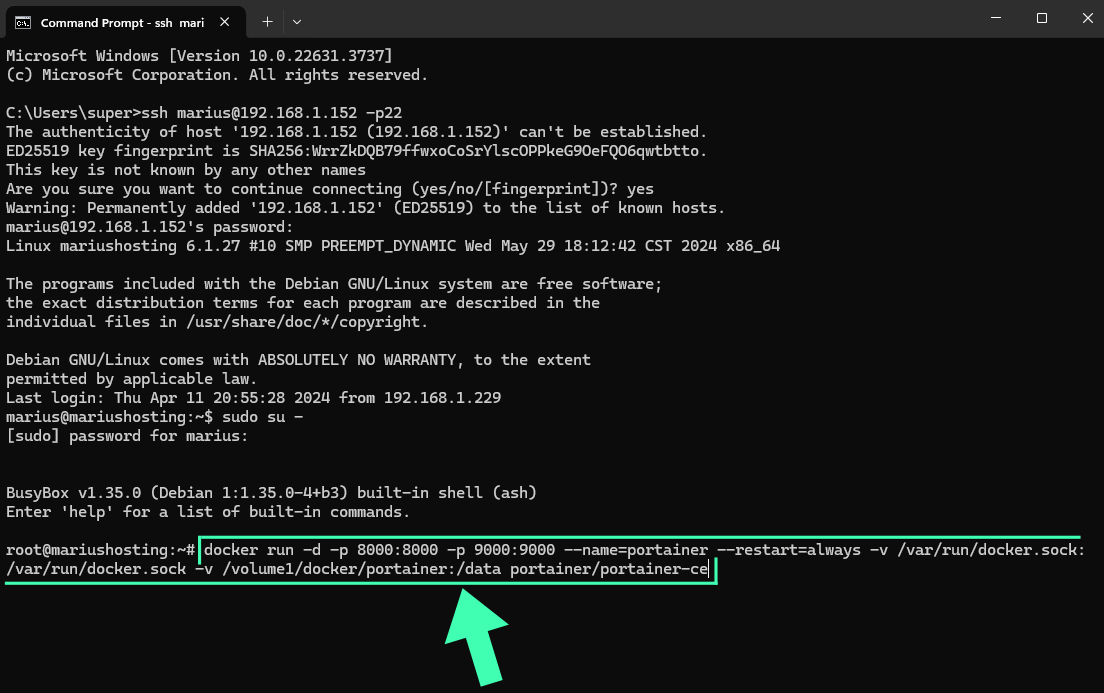
STEP 17
After you press Enter on your keyboard, the installation of the Docker Portainer image will start and should be done in a few seconds or minutes, depending on your Internet connection speed. Follow the instructions in the image below.
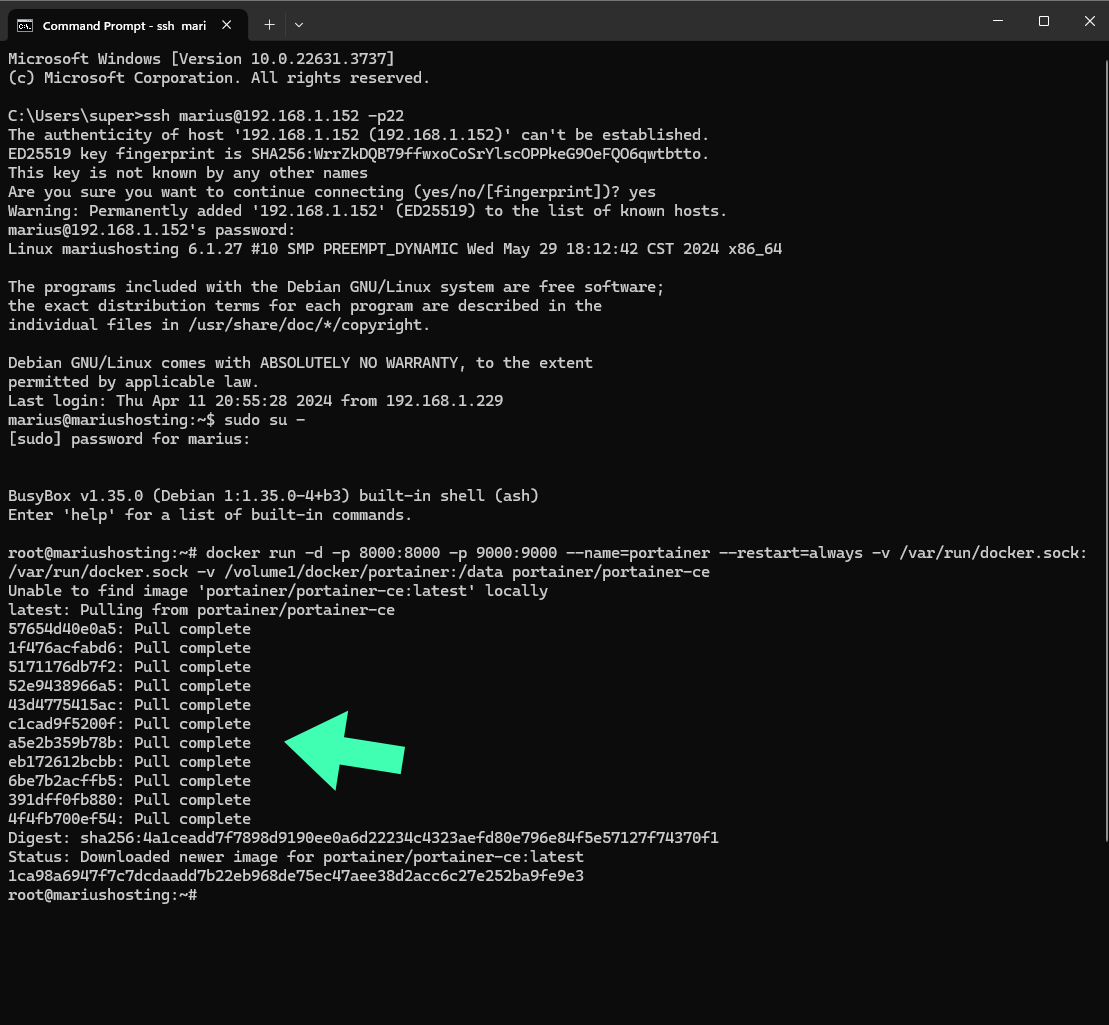
STEP 18
🟢Please Support My work by Making a Donation. Almost 99,9% of the people that install something using my guides forget to support my work, or just ignore STEP 1. I’ve been very honest about this aspect of my work since the beginning: I don’t run any ADS, I don’t require subscriptions, paid or otherwise, I don’t collect IPs, emails, and I don’t have any referral links from Amazon or other merchants. I also don’t have any POP-UPs or COOKIES. I have repeatedly been told over the years how much I have contributed to the community. It’s something I love doing and have been honest about my passion since the beginning. But I also Need The Community to Support me Back to be able to continue doing this work.
STEP 19
Open your browser and type in http://ugreenas-ip-address:9000 Follow the instructions in the image below. Choose a Username and a strong Password, confirm the password, then press Create user.
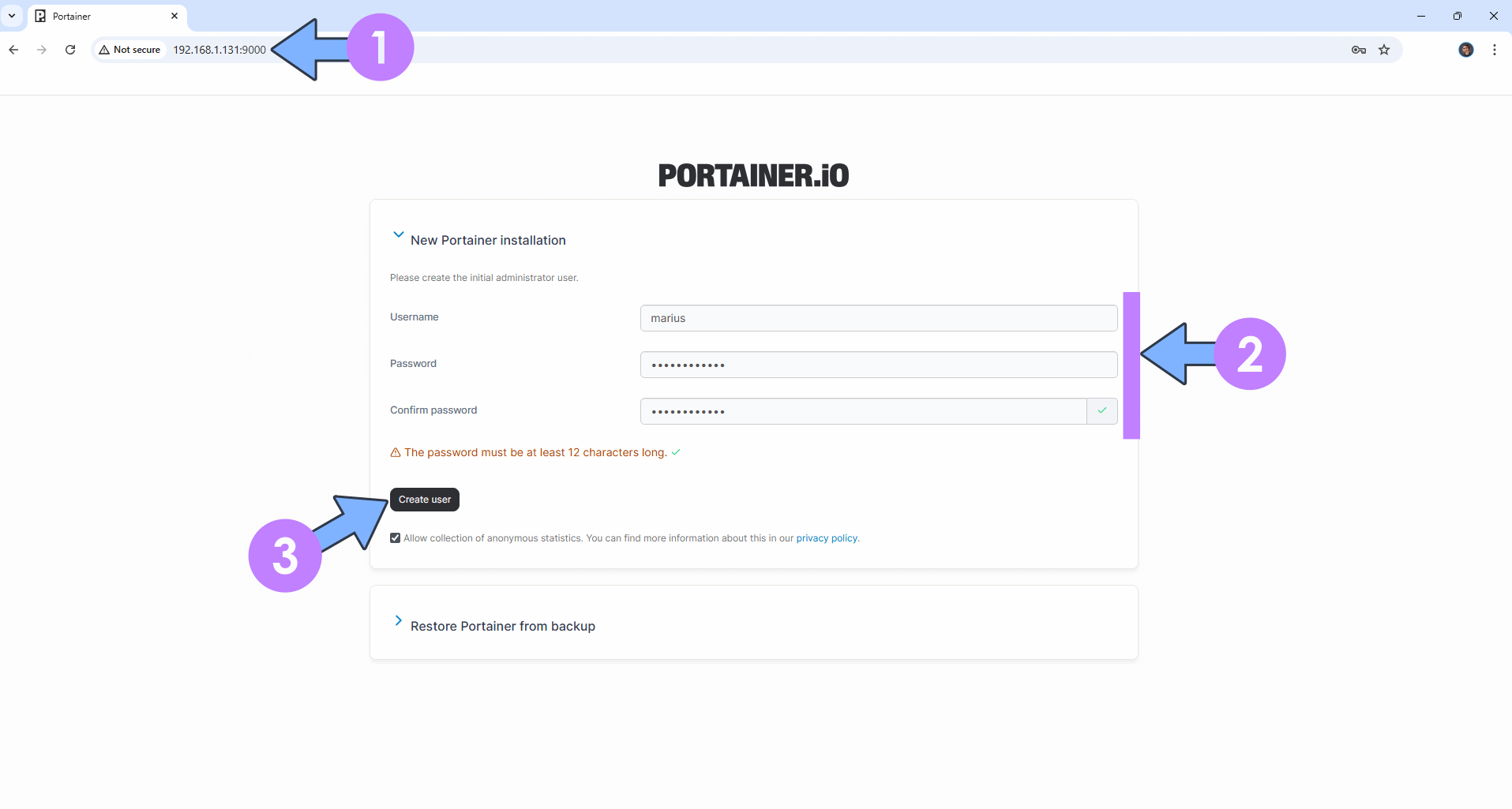
STEP 20
Click Get Started (proceed using the local environment in which Portainer is running in). Follow the instructions in the image below.
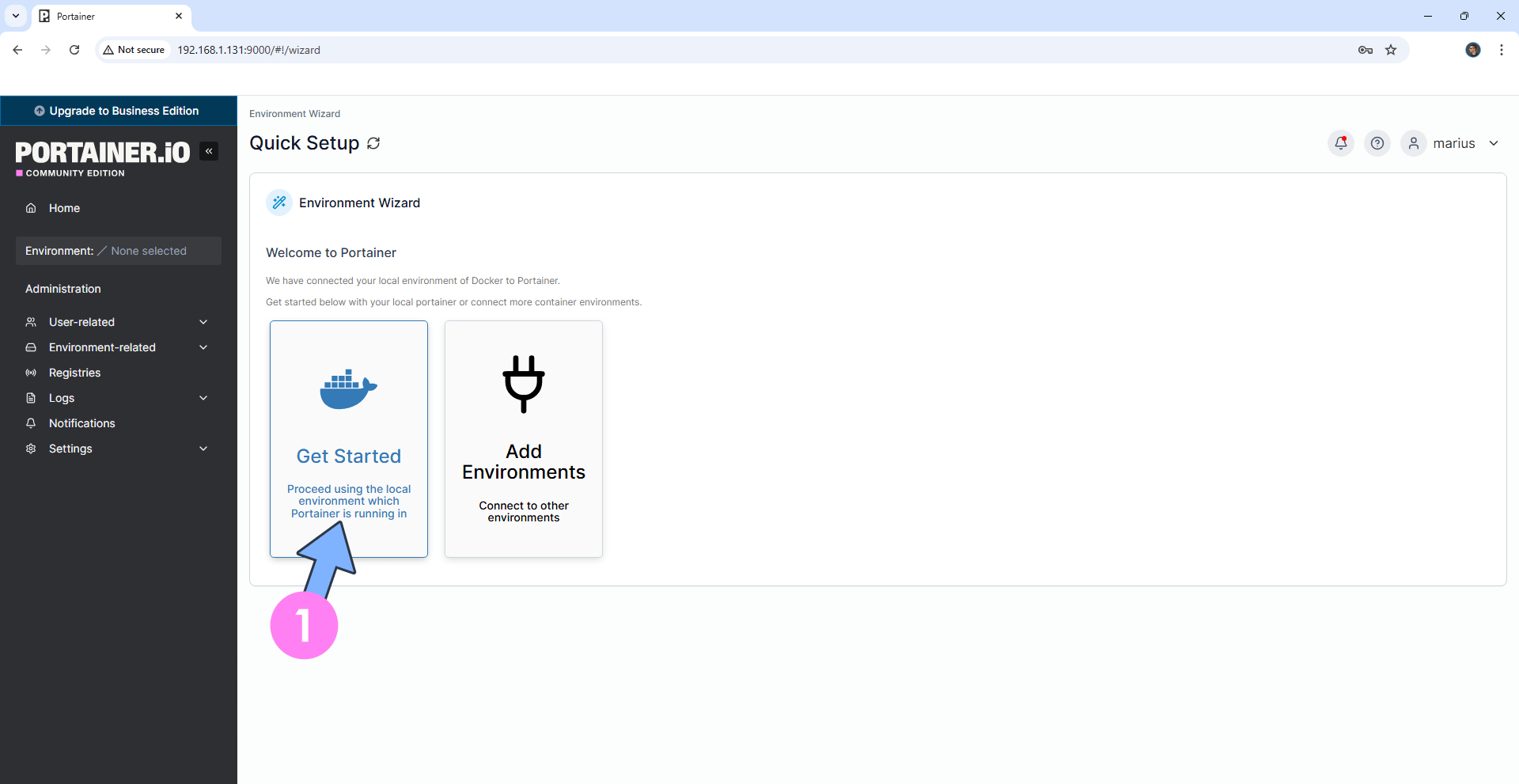
STEP 21
On the right in the Environments area, click on the little pencil icon. Follow the instructions in the image below.
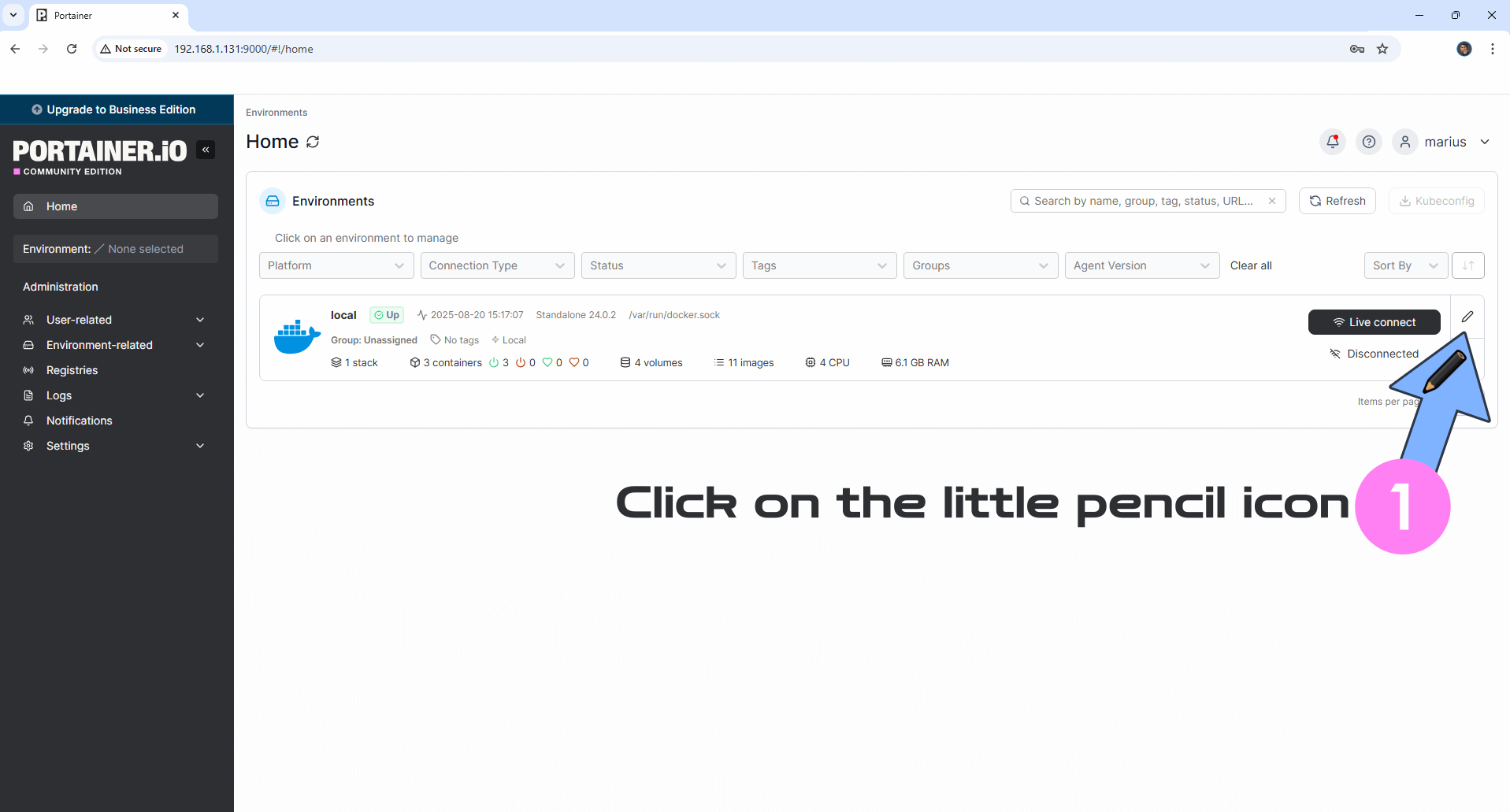
STEP 22
After you click on the little pencil, a new page will open. On the Public IP area, type in your own UGREEN NAS Local IP which, in my case, is 192.168.1.131 then click Update environment. Follow the instructions in the image below.
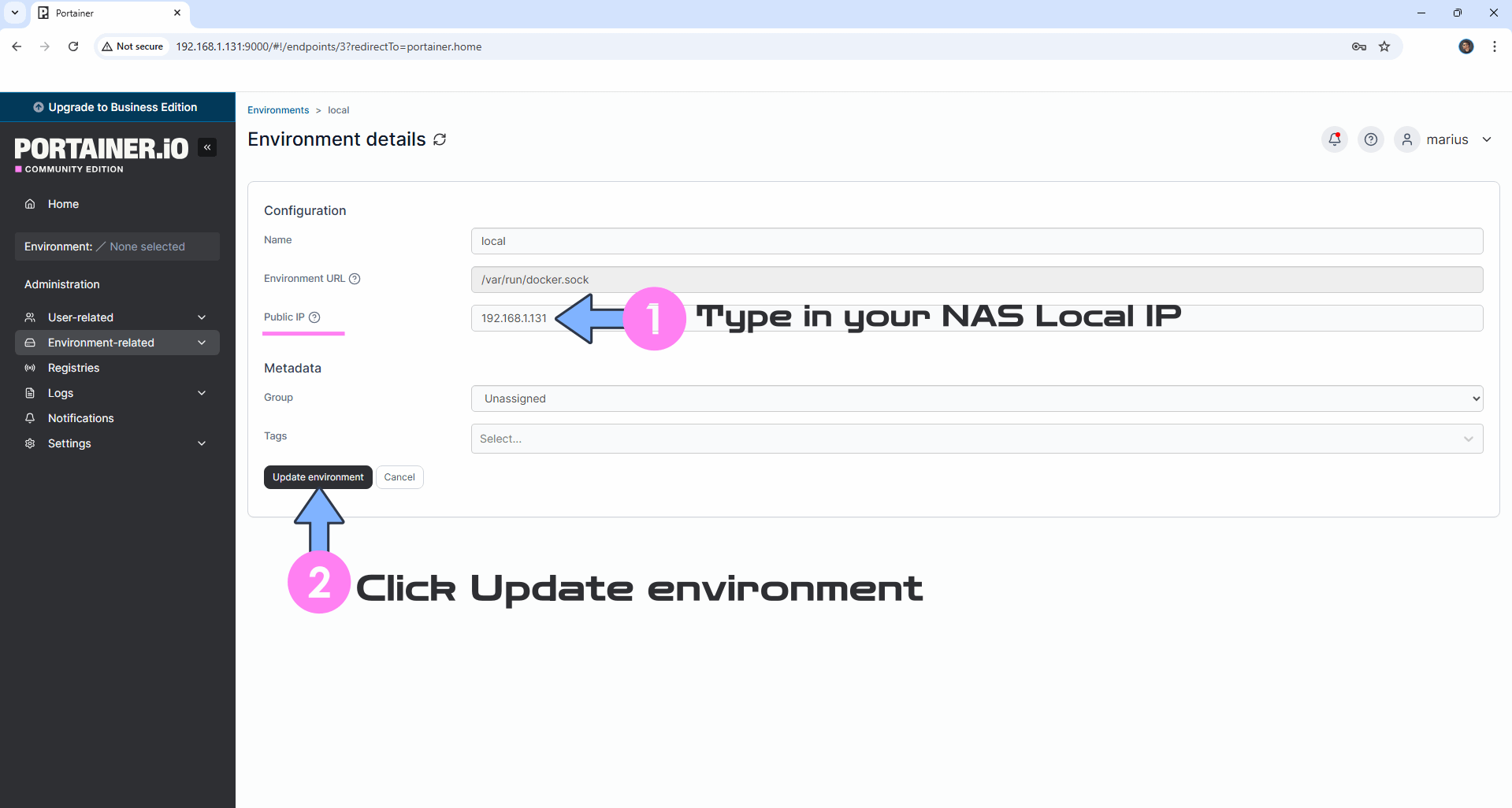
STEP 23
If everything goes right, you will see this message at the top right of your screen: “Environment updated“. Go straight to the next STEP.
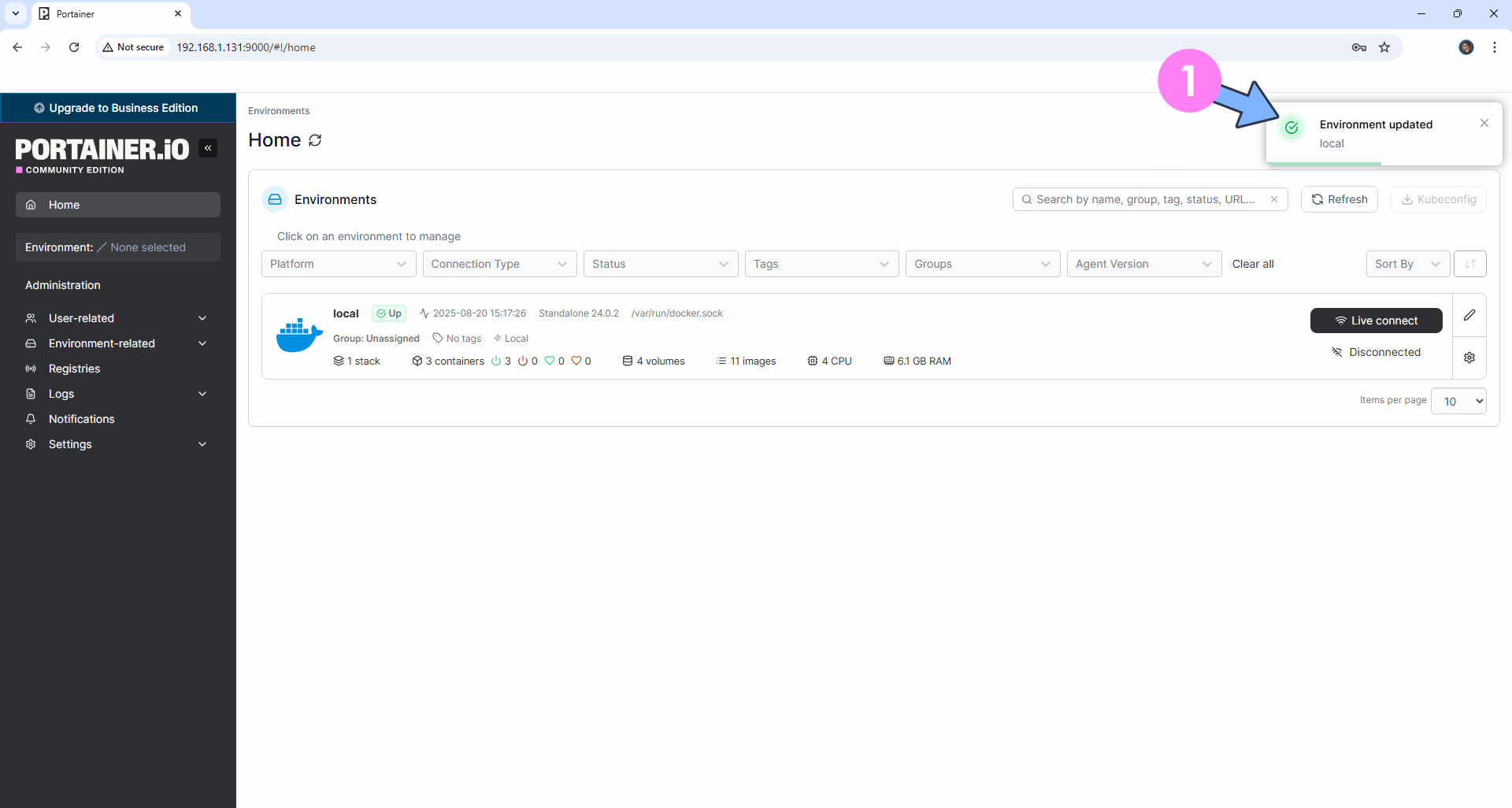
STEP 24
Click Live connect. Follow the instructions in the image below.
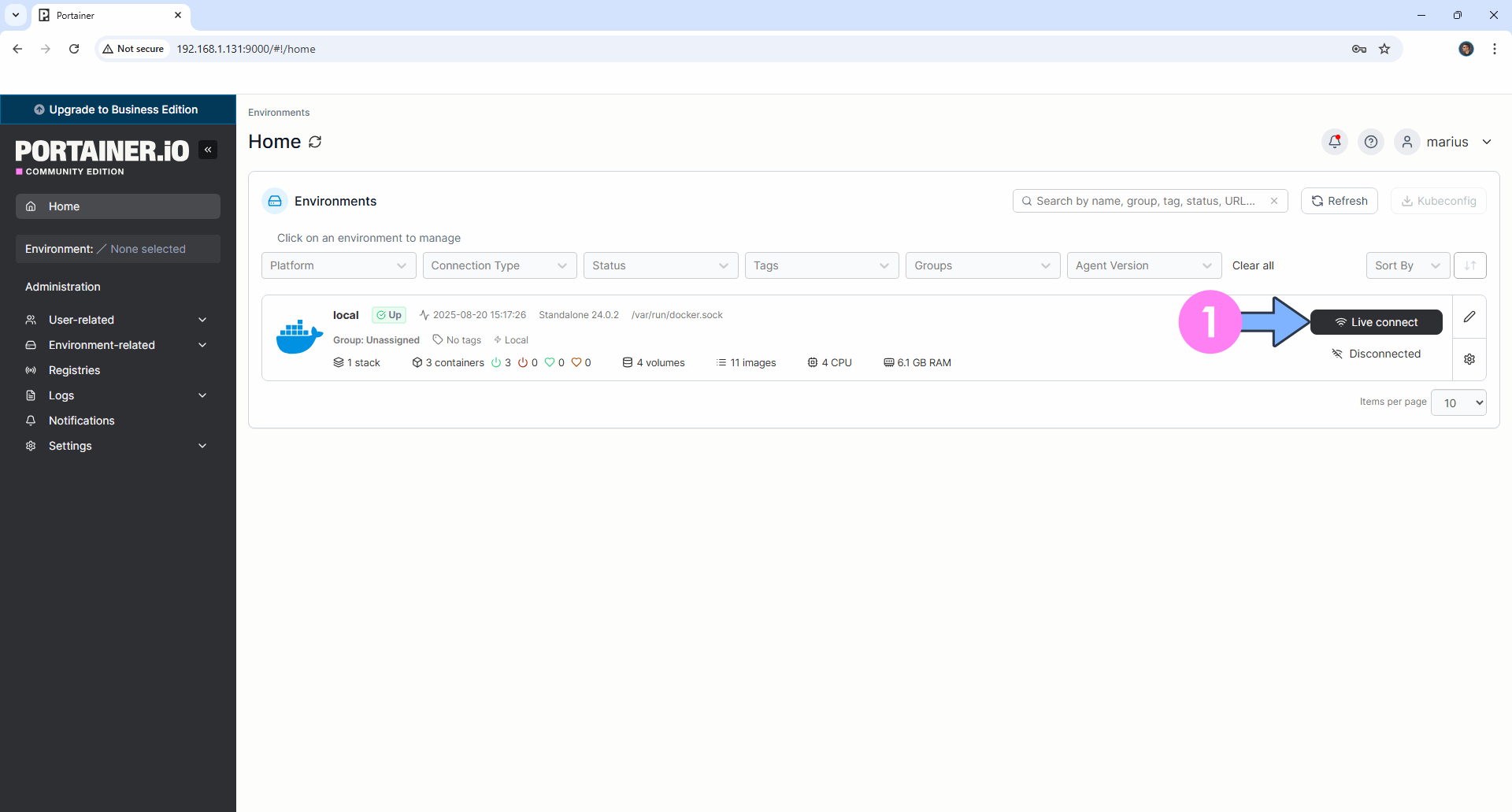
STEP 25
Your Dashboard will look like this. Go straight to the next STEP.
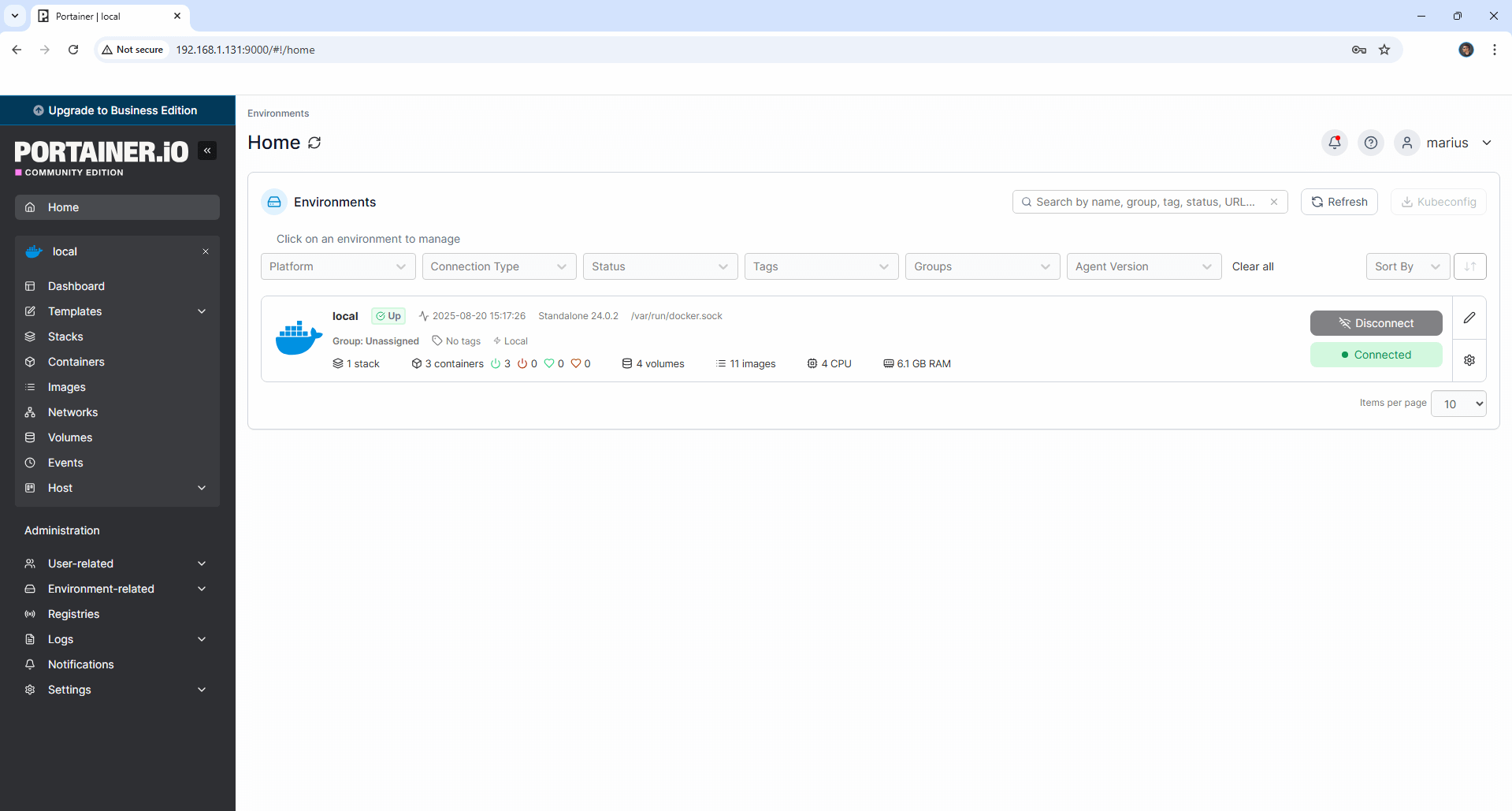
STEP 26
On the left Portainer sidebar, click on Registries then Click + Add registry. Follow the instructions in the image below.
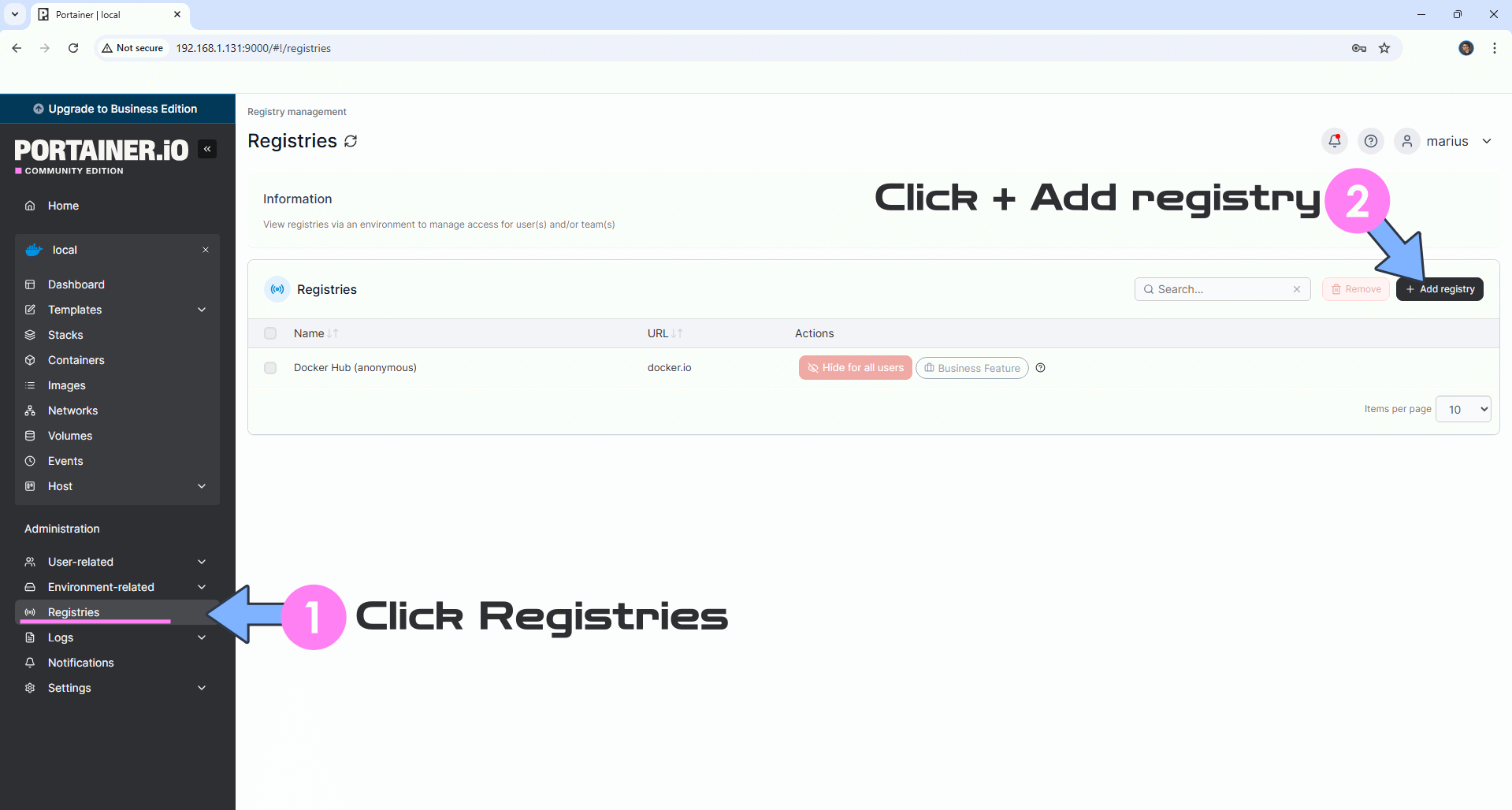
STEP 27
Click on Custom registry. In the Name field area type in Github and in the Registry URL area type in ghcr.io
Click Add registry to save the settings. Follow the instructions in the image below.
Note: The ghcr.io registry is mandatory if you want to update Docker containers via Portainer that are served via the Github registry.
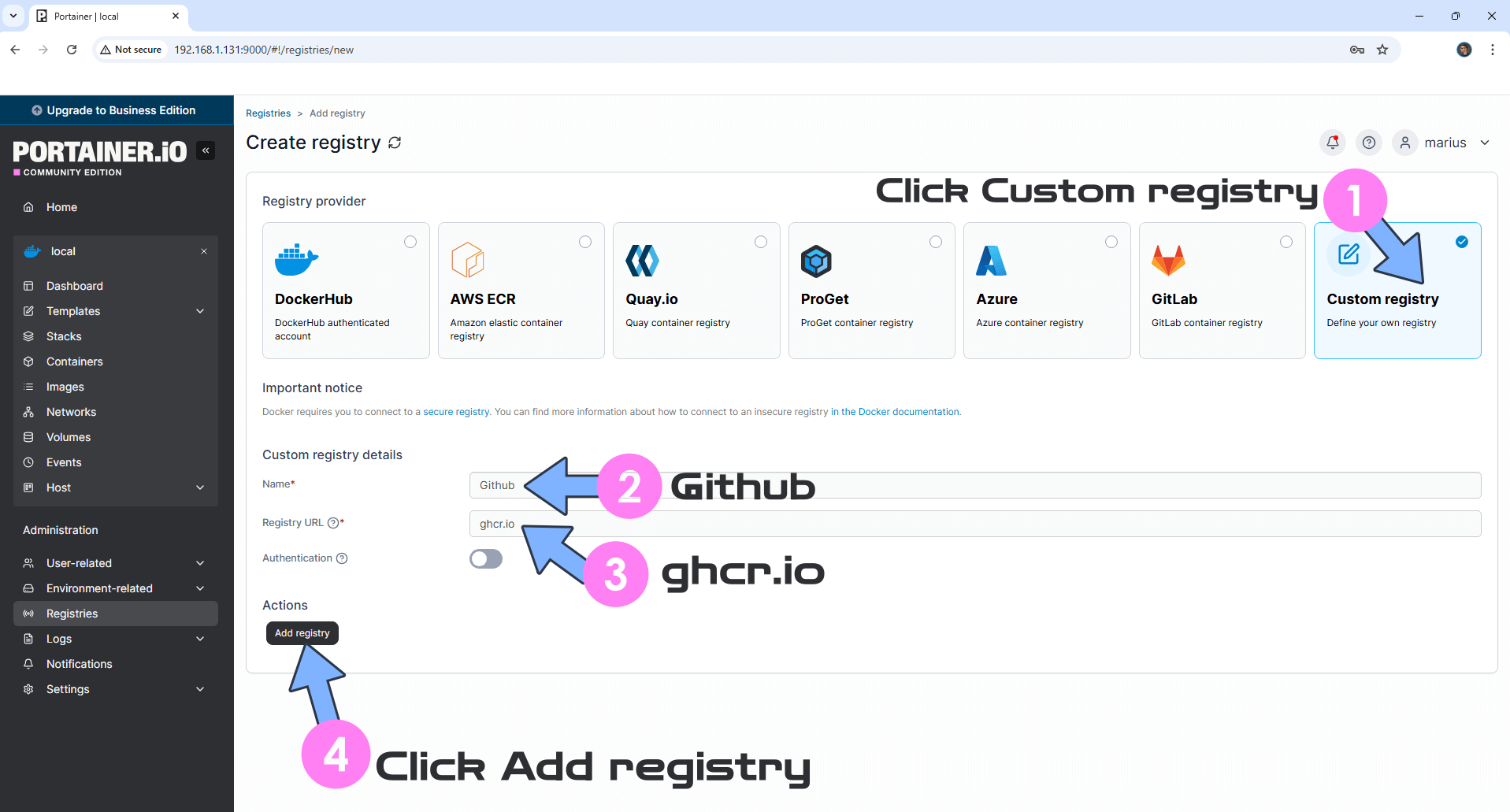
Click on +Add registry then Custom registry. In the Name field area type in CODEBERG and in the Registry URL area type in codeberg.org
Click Add registry to save the settings. Follow the instructions in the image below.
Note: The codeberg.org registry is mandatory if you want to update Docker containers via Portainer that are served via the codeberg.org registry.
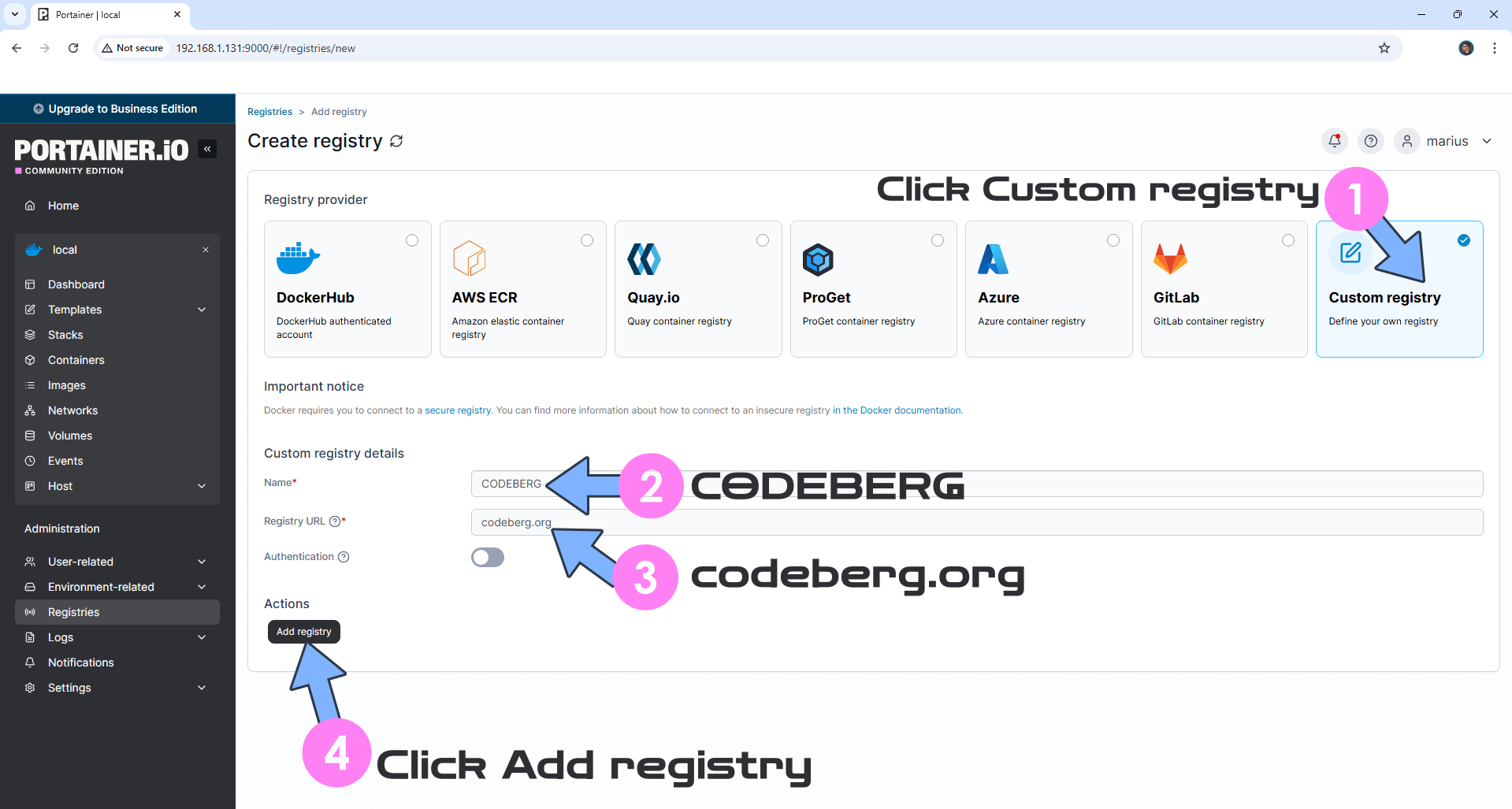
Click on +Add registry then Custom registry. In the Name field area type in Quay.io and in the Registry URL area type in quay.io
Click Add registry to save the settings. Follow the instructions in the image below.
Note: The quay.io registry is mandatory if you want to update Docker containers via Portainer that are served via the quay.io registry.
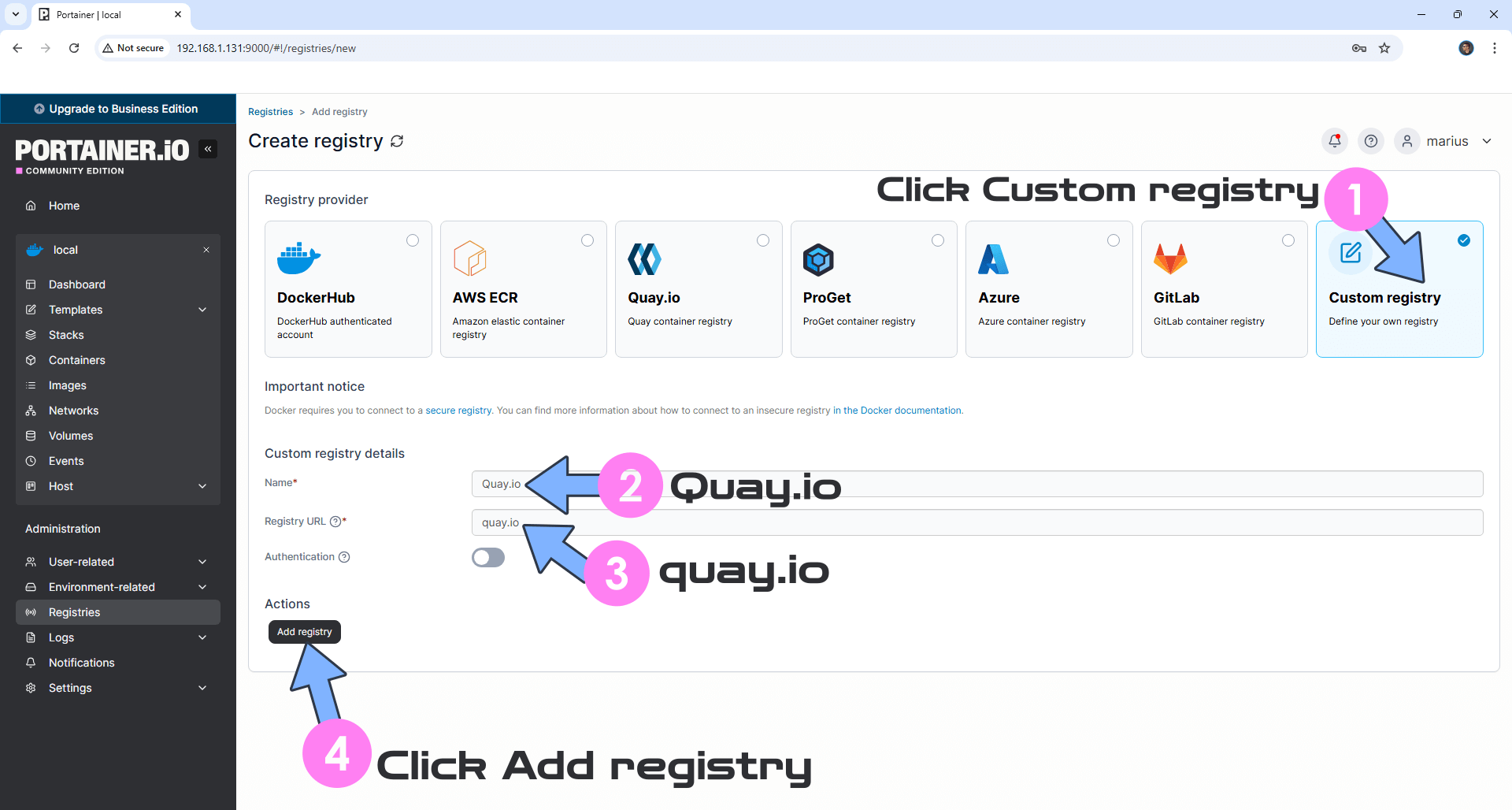
STEP 28
If everything goes right, your Registries area will look like this. Go straight to the next STEP.
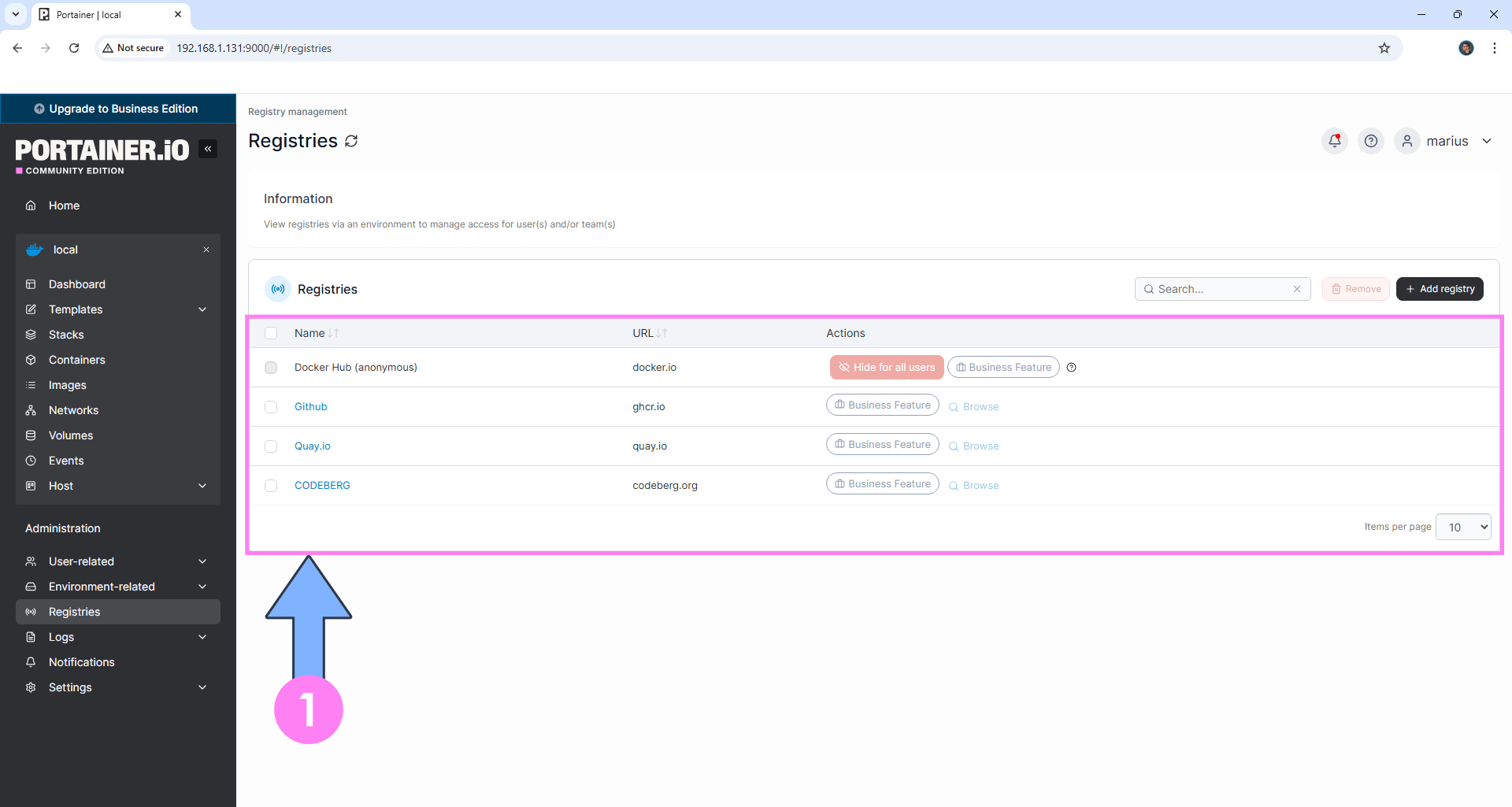
STEP 29
Follow the steps below to remove the blue attention seeking “Upgrade to Business Edition” button.
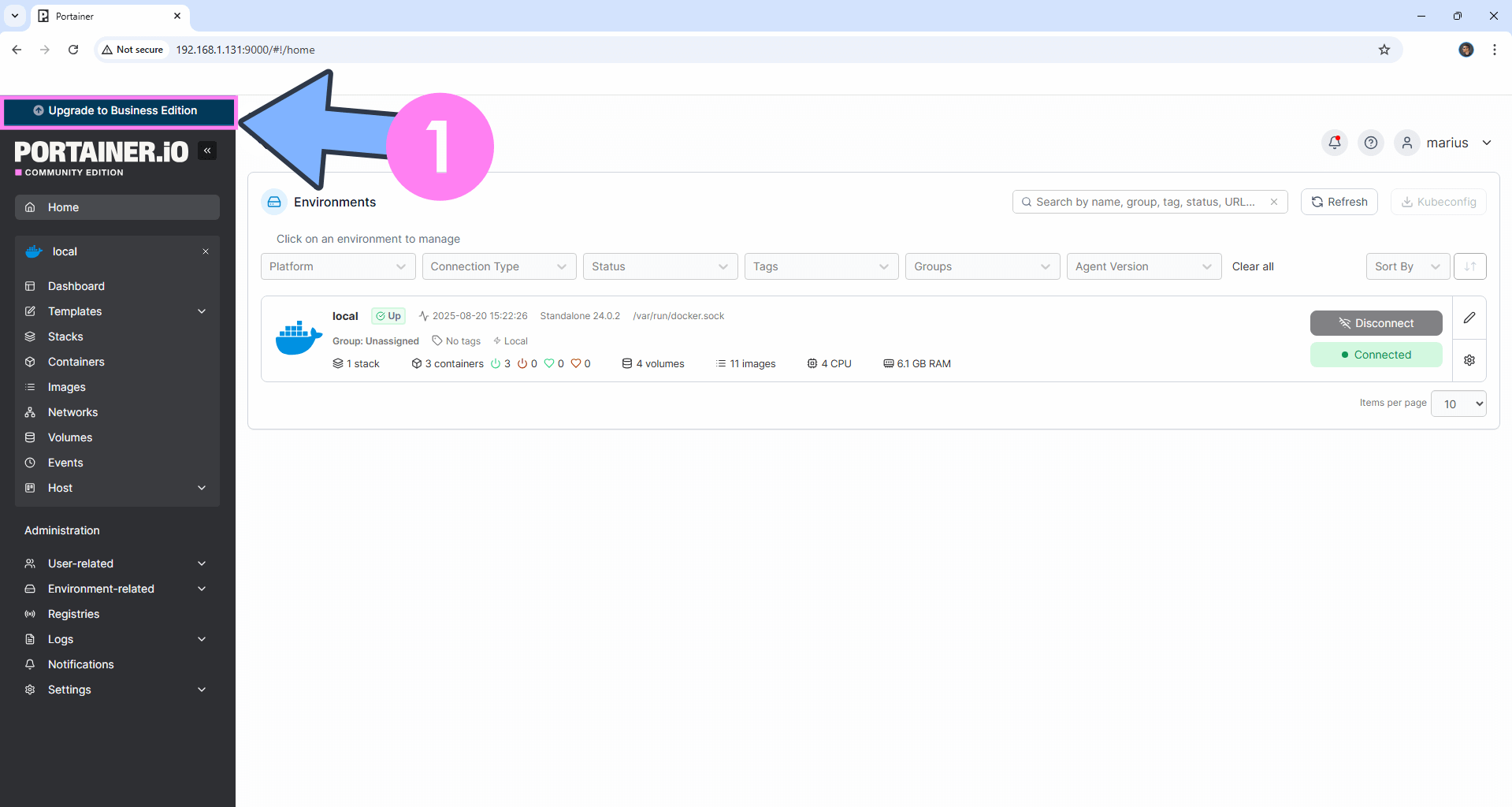
Download (click on the blue link below) the adBlocker extension for Chrome. Click to Add to Chrome. Follow the instructions in the image below.
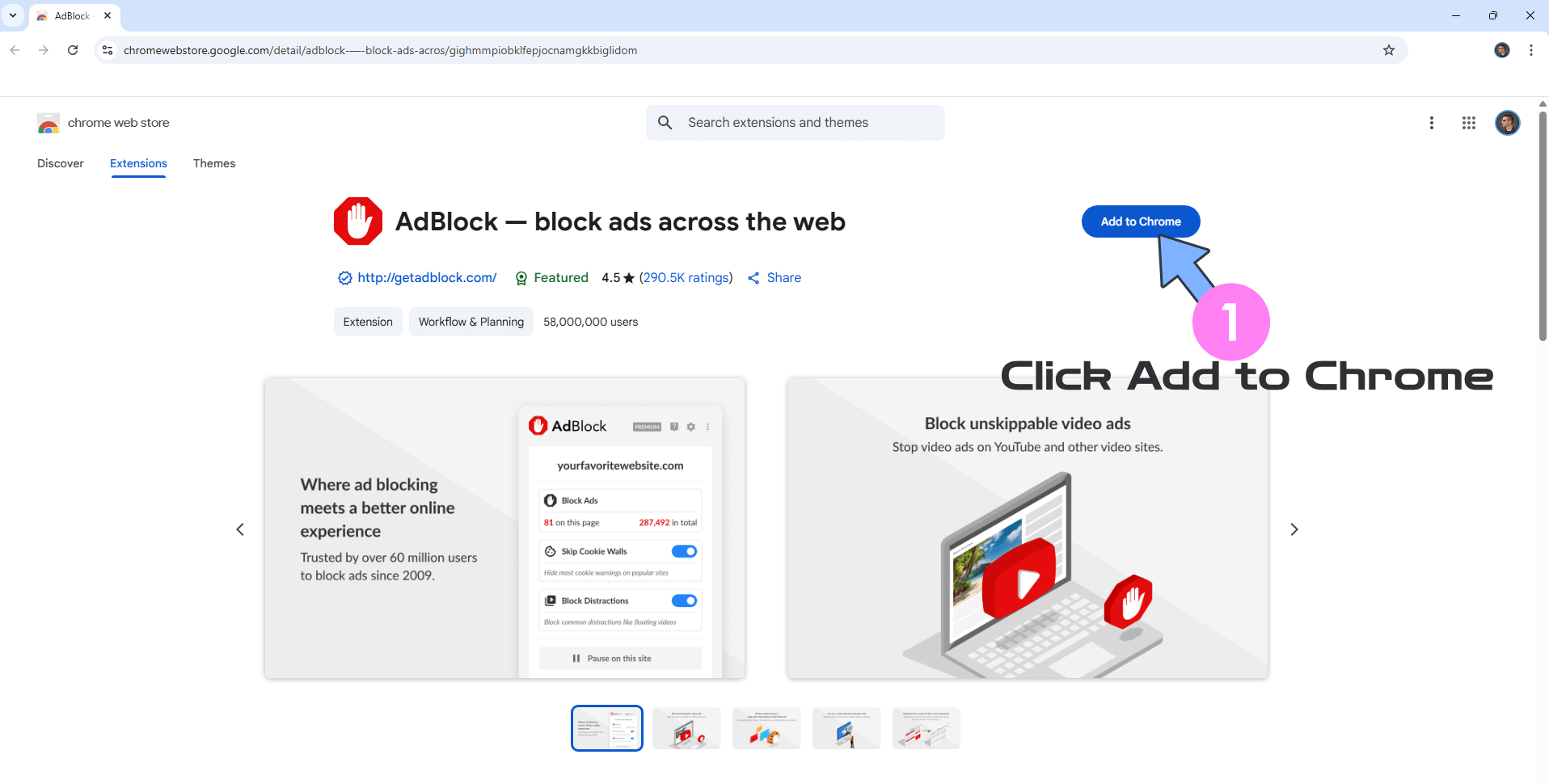
Click Add extension. Follow the instructions in the image below.
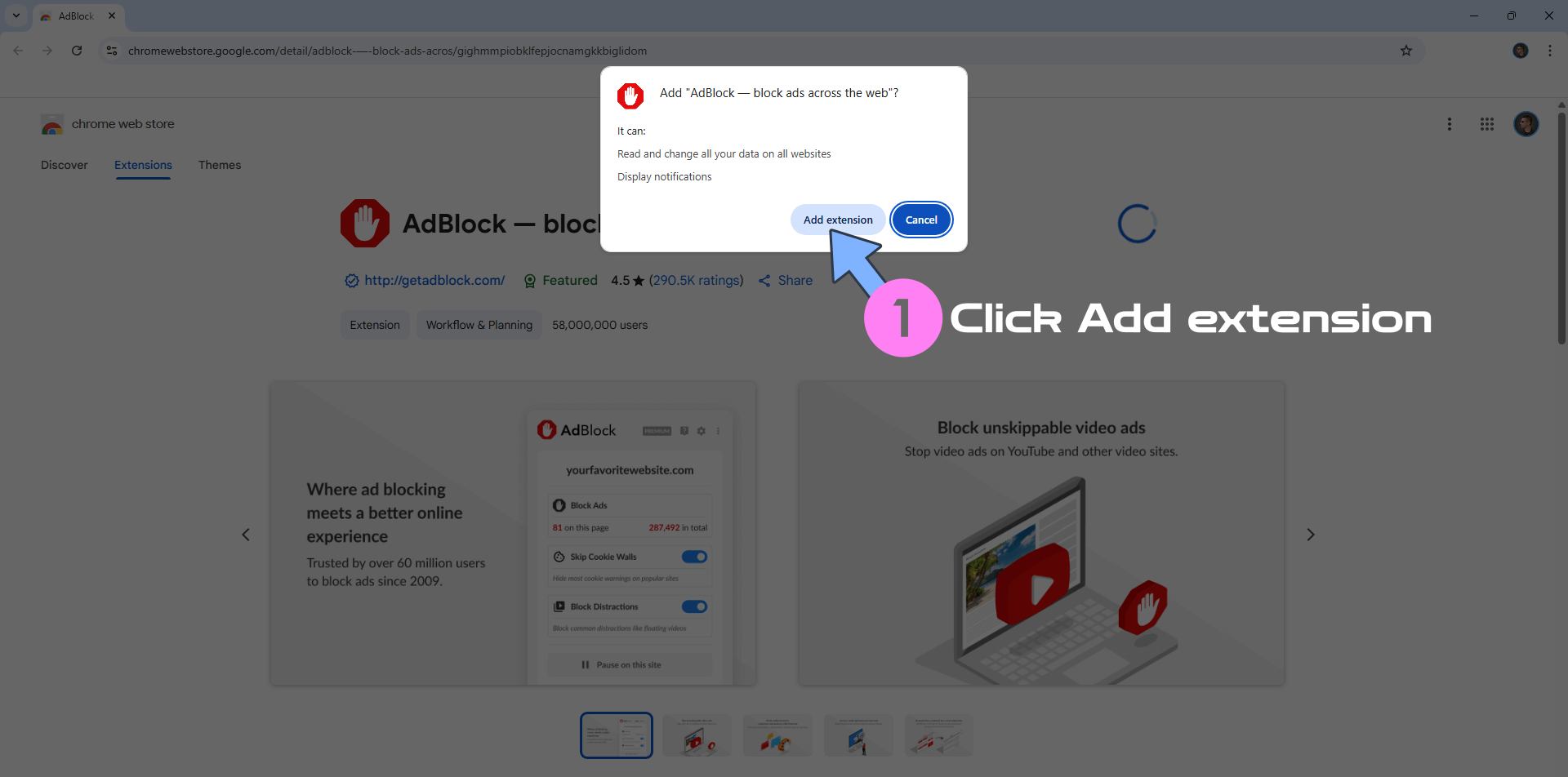
STEP 30
Go Back to your Portainer page. Right click on the blue “Upgrade to Business Edition” button. Select AdBlock then Block this ad. Follow the instructions in the image below.
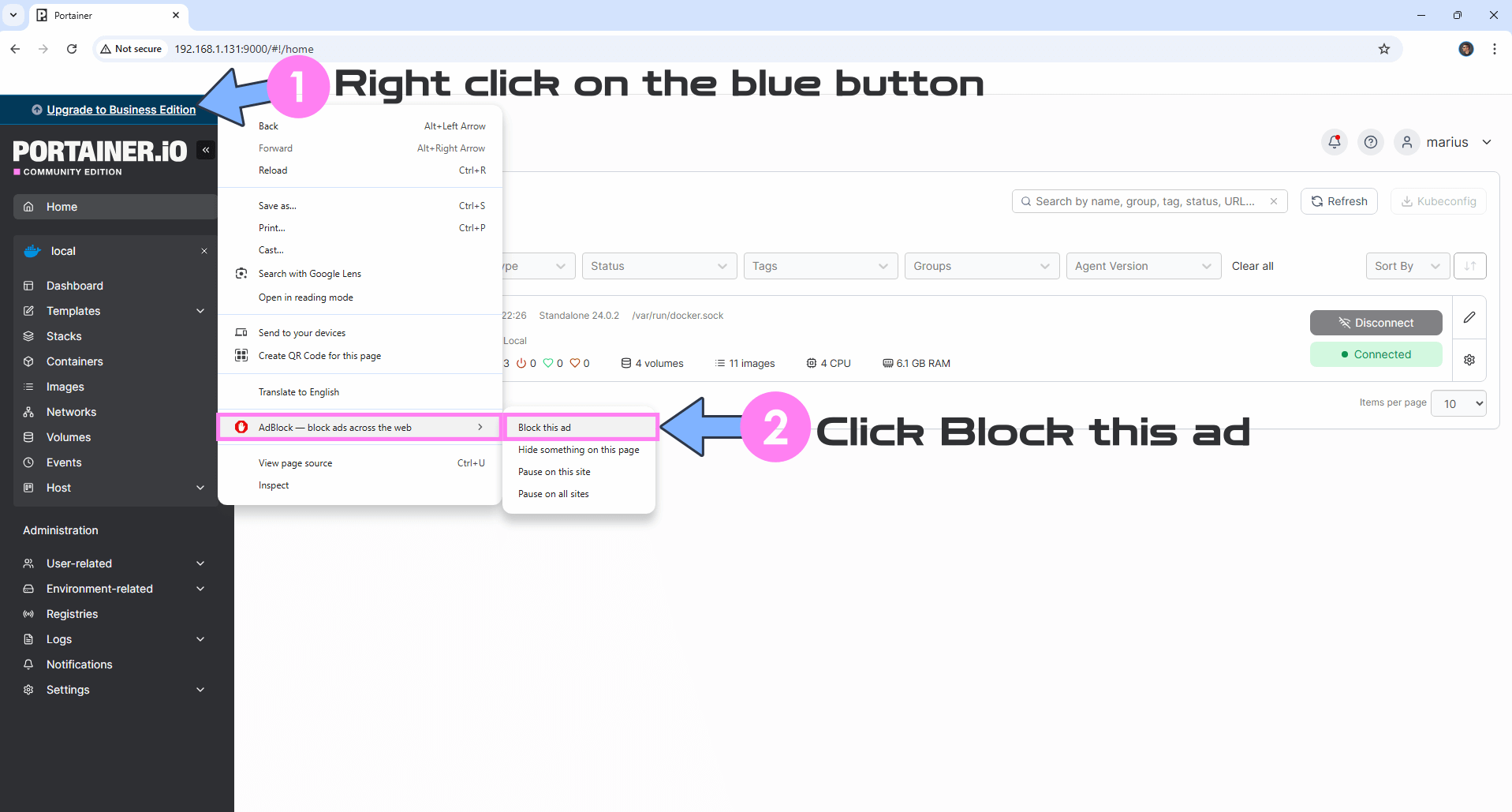
STEP 31
Click Looks good. Follow the instructions in the image below.
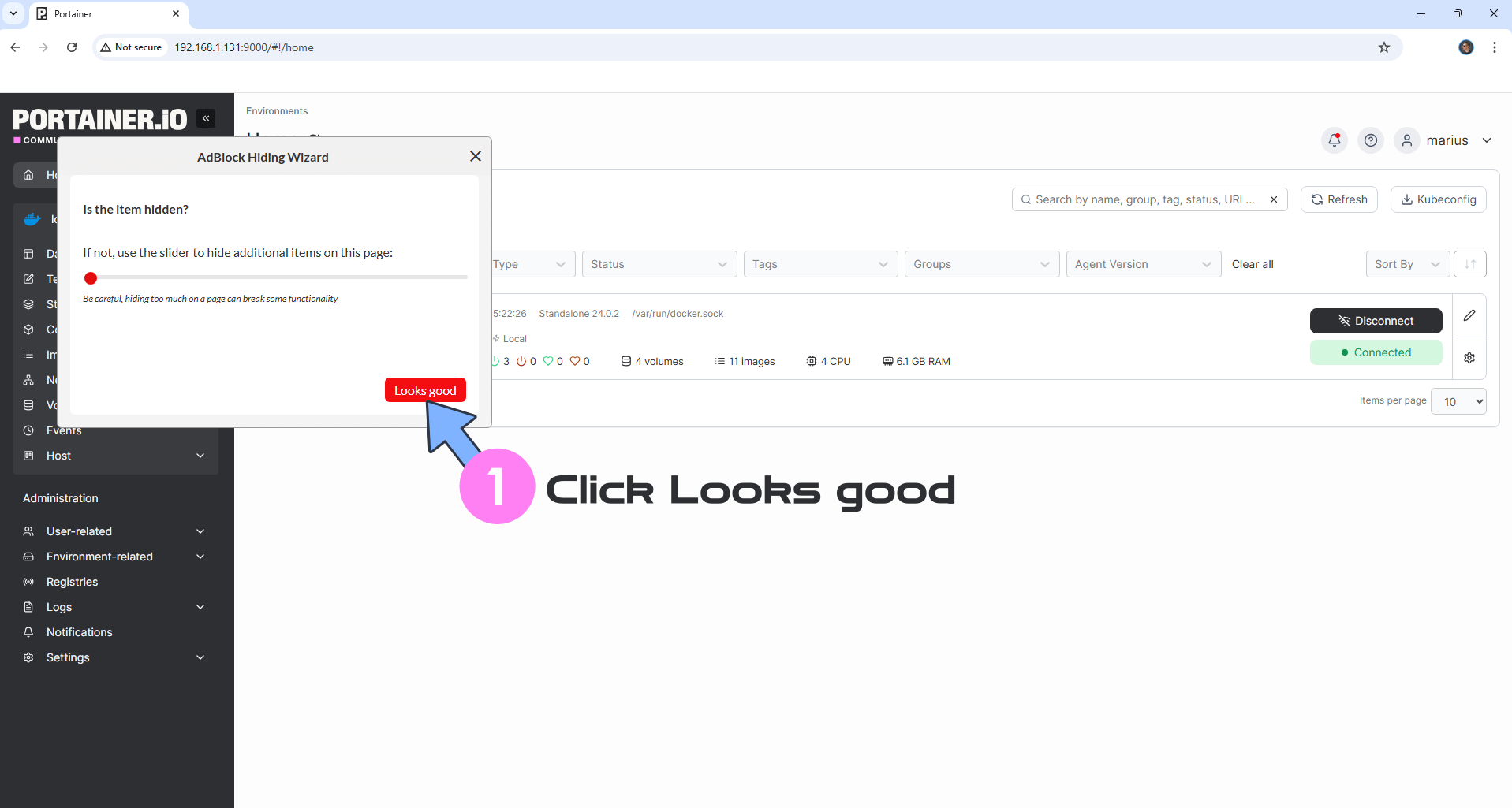
Click Confirm. Follow the instructions in the image below.
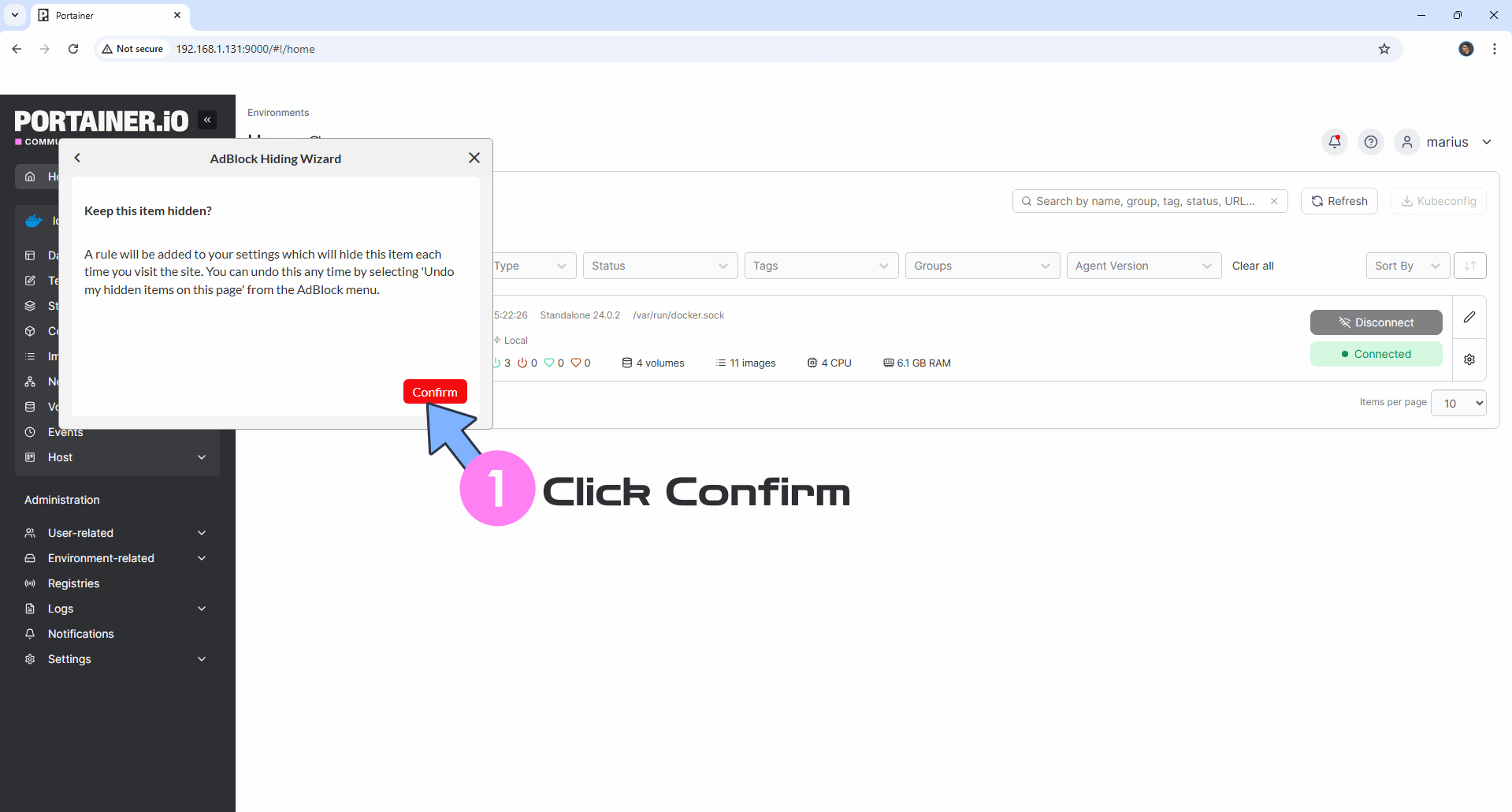
Enjoy your Portainer without the blue attention seeker “Upgrade to Business Edition” button.
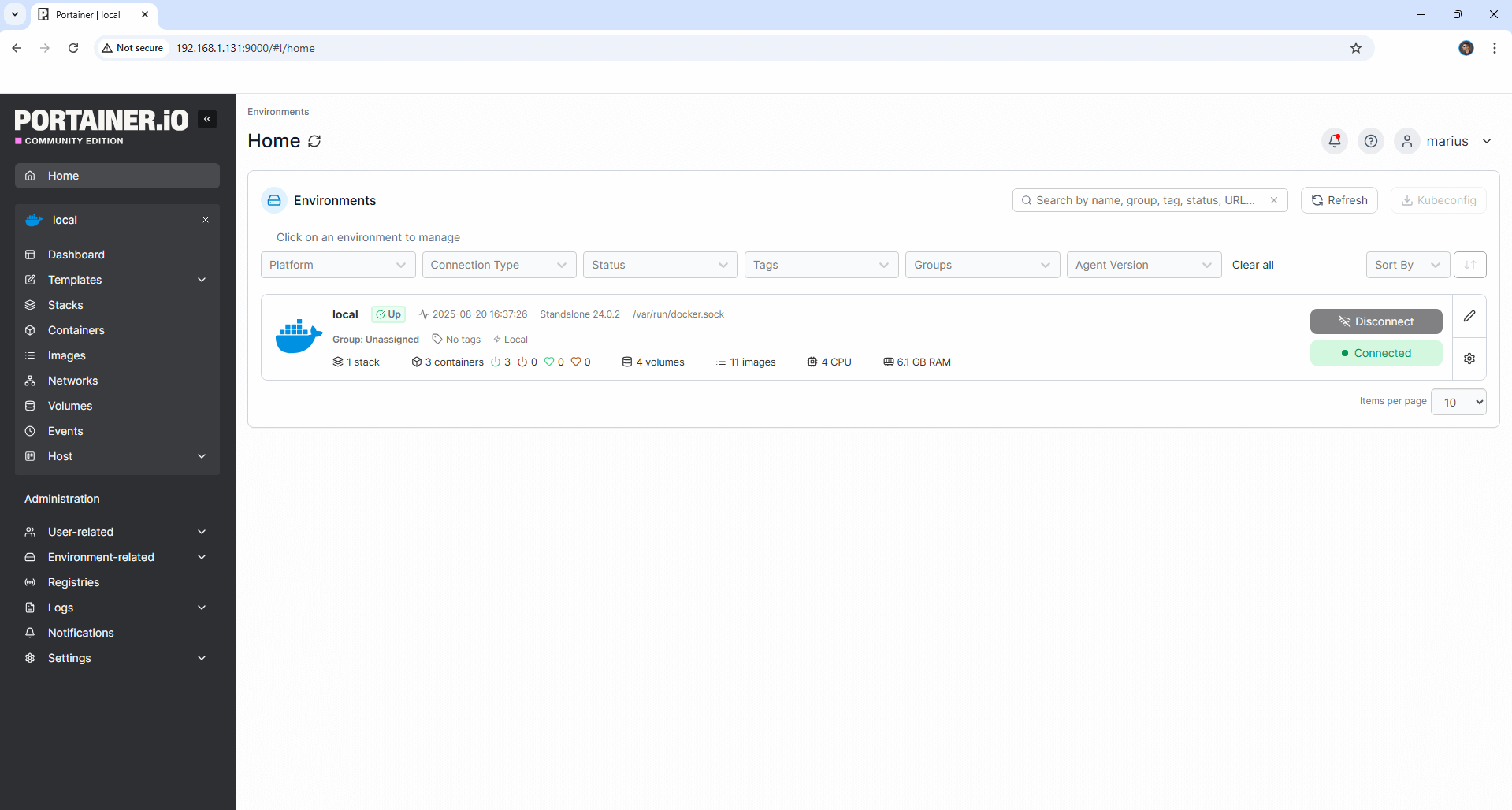
Note: CE stands for Portainer Community Edition.
Note: If you want to run the Portainer container over HTTPS, check out How to Run Docker Containers Over HTTPS on Your UGREEN NAS. ⚠️Note: If you are using a reverse proxy with Portainer, ensure you add the TRUSTED_ORIGINS environment variable to the code at STEP 16, as shown in the example below. Change Yourdomainnamedotcom with your own domain name.
docker run -d -p 8000:8000 -p 9000:9000 --name=portainer --restart=always -e TRUSTED_ORIGINS:Yourdomainnamedotcom -v /var/run/docker.sock:/var/run/docker.sock -v /volume1/docker/portainer:/data portainer/portainer-ce🐳Note: How to Create Docker Shortcuts on Desktop.
🆕Note: How to Update Portainer to the latest version.
🆕Note: How to Clean Docker.
This post was updated on Wednesday / December 17th, 2025 at 7:15 PM
